Your home
in the heart of Florence
Art at your Doorstep → Just around the Flat / Trips outside Florence
The historic centre of Florence, although very intimate, is characterized by an incredible number of monuments, museums, palaces and churches that surround the apartments.
Here is a list of places not to be missed. You can choose what to visit, according to the length of your stay and individual preferences. It is a useful reminder in case you want to extend your stay or decide to come back again…
Duomo Area
Piazza del Duomo

The Cathedral of S. Maria del Fiore, Giotto's bell tower and the Baptistery of S. Giovanni with the ancient mosaics and bronze doors by Lorenzo Ghiberti and Andrea Pisano are the religious and artistic cornerstone of the city centre. You can also go up on to the majestic dome of the Cathedral by Brunelleschi to see the panorama of the city.
Duomo
Opera Duomo Museum

The museum, which is located in a building opposite the apses of the Cathedral, is dedicated to the works of art that have been removed from the square and its monuments to be preserved. The scenographic setting emphasizes the value of absolute masterpieces such as Michelangelo's Pietà Bandini and Donatello's Maddalena.
Opera Duomo Museum
Church of Orsanmichele
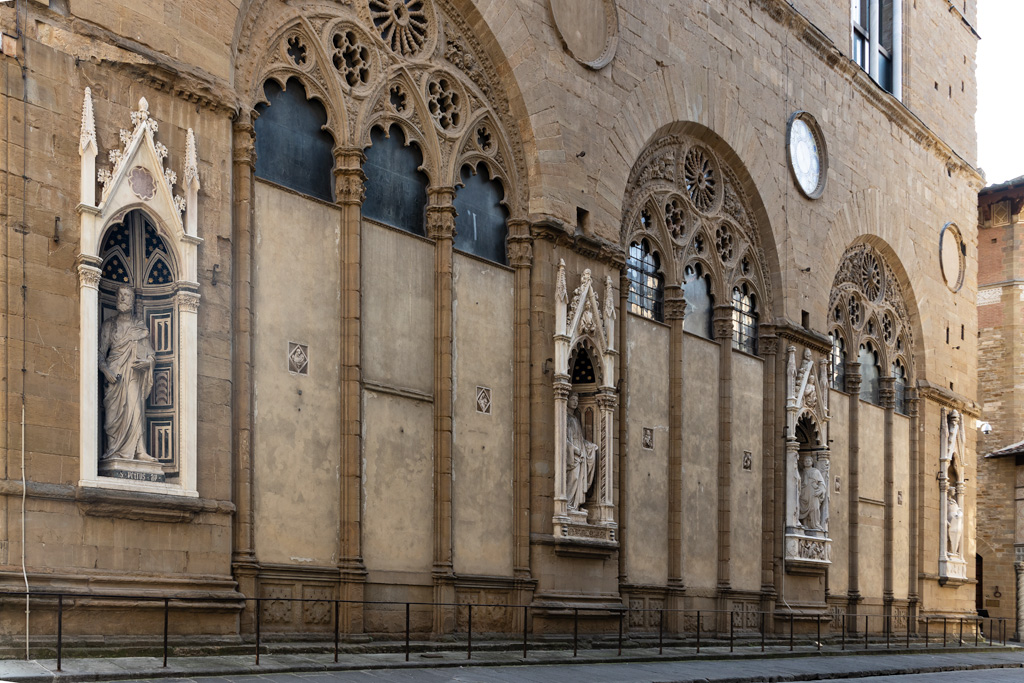
The Church of Orsanmichele, which was built on the ground floor of the loggia of the grain market, is characterized by a series of external tabernacles with the statues of the patron saints of the Arts. Inside you can admire the splendid tabernacle by Orcagna.
Orsanmichele Museum
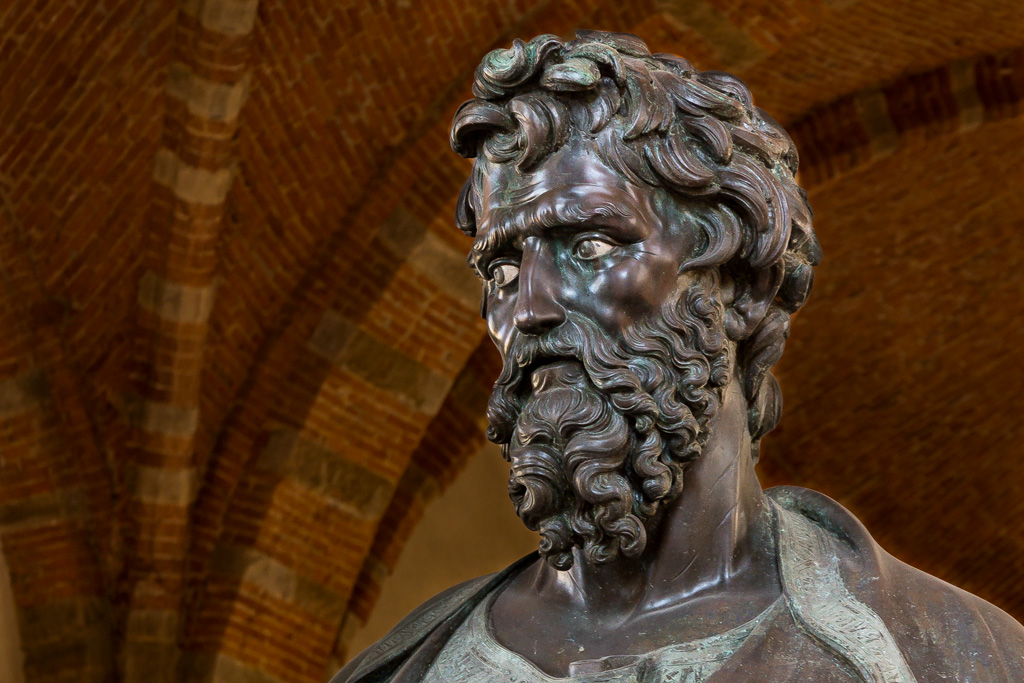
In the Orsanmichele loggia, the first and second floors are dedicated to the museum which houses 11 of the 14 statues that were in the external tabernacles and that have been replaced by copies. An incredible collection that presents the great masters of Renaissance sculpture (Ghiberti, Verrocchio, Nanni di Banco, etc).
Orsanmichele Museum
The Museum of the Ancient Florentine House
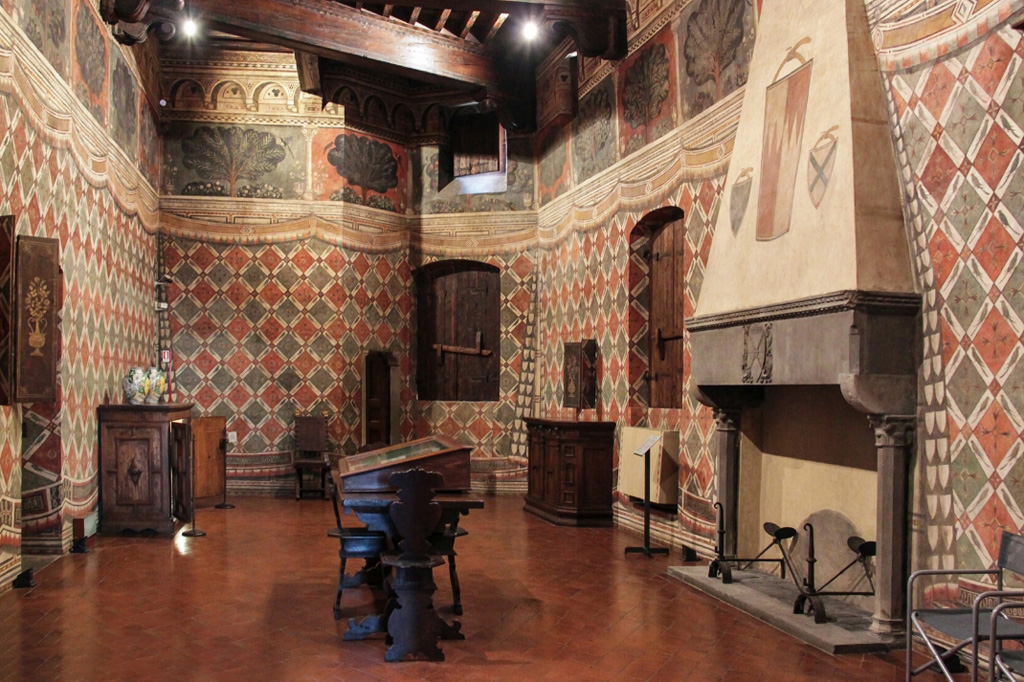
The history of humanity is not only the story of conquests and wars, but also that of everyday life. The Museum of the Ancient Florentine House in Palazzo Davanzati, a palace built in the mid-fourteenth century, presents the rooms of an ancient stately home furnished with sculptures, paintings, furniture, majolica, lace and several other objects.
Palazzo Davanzati
The Porcellino Fountain
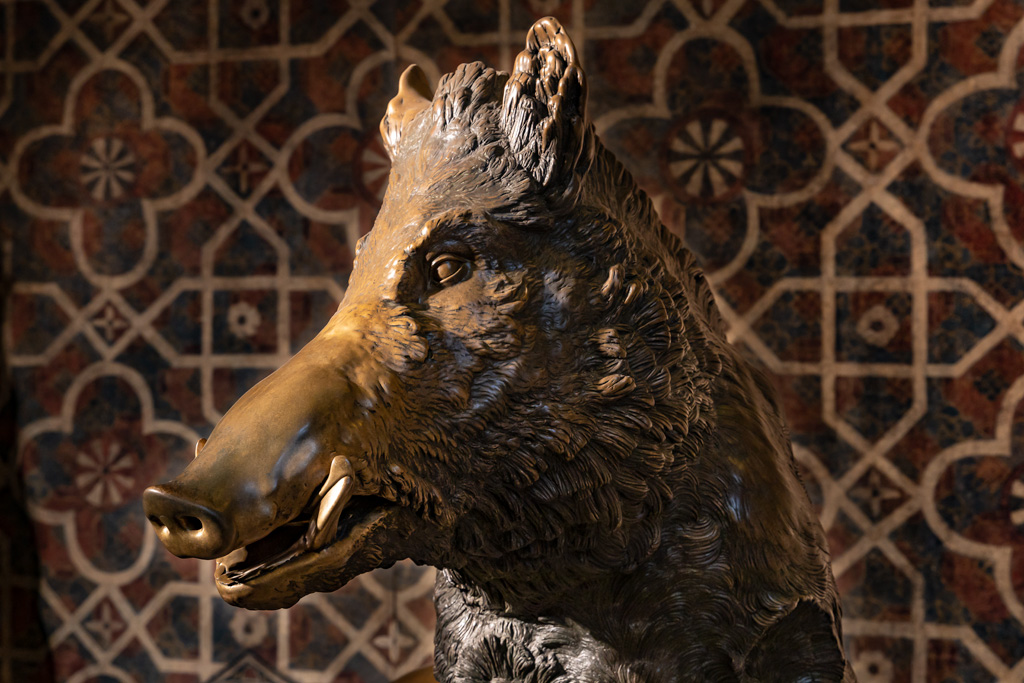
The statue of the little pig, which actually represents a boar, is a very popular monument. Every tourist makes a stop at the Loggia del Mercato Nuovo to touch the nose of the bronze animal and ensure luck. In reality, you touch a copy because the original statue, realised in the early decades of the seventeenth century, is kept at the Stefano Bardini Museum.
Signoria Area
Piazza della Signoria and Palazzo Vecchio
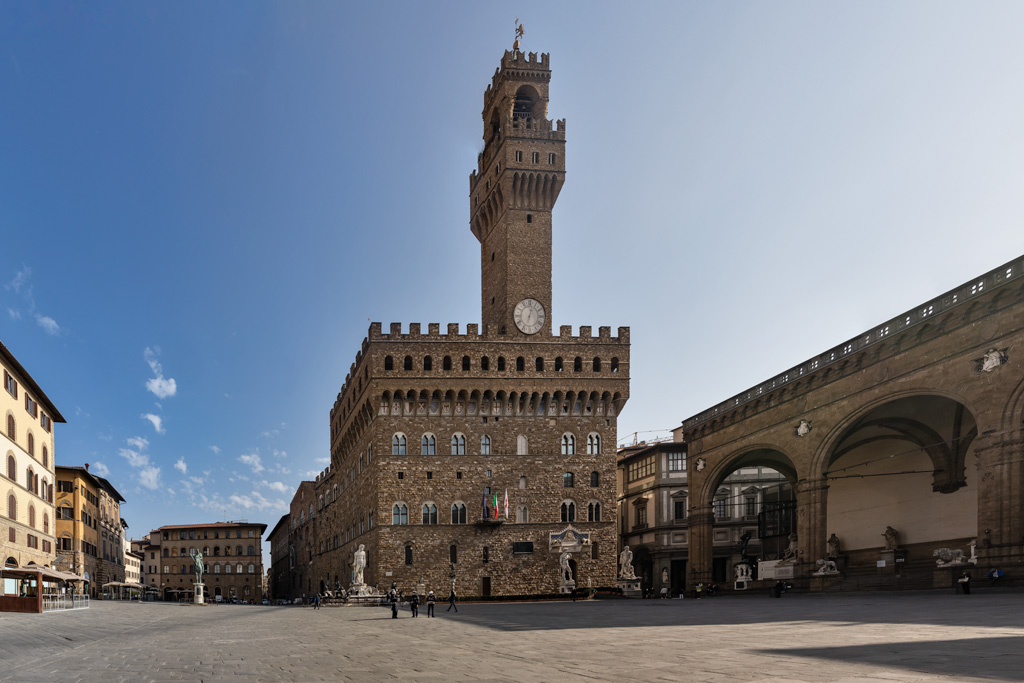
The heart of the civil power of Florence is represented by Piazza della Signoria and Palazzo Vecchio, today the seat of the Municipality. Palazzo Vecchio, a fortified building dominated by the Arnolfo Tower, contains works of art of great importance both in the courtyards and in the rooms of the museum.
Musei Civici Fiorentini, Museo di Palazzo Vecchio
Sculptures in Piazza della Signoria
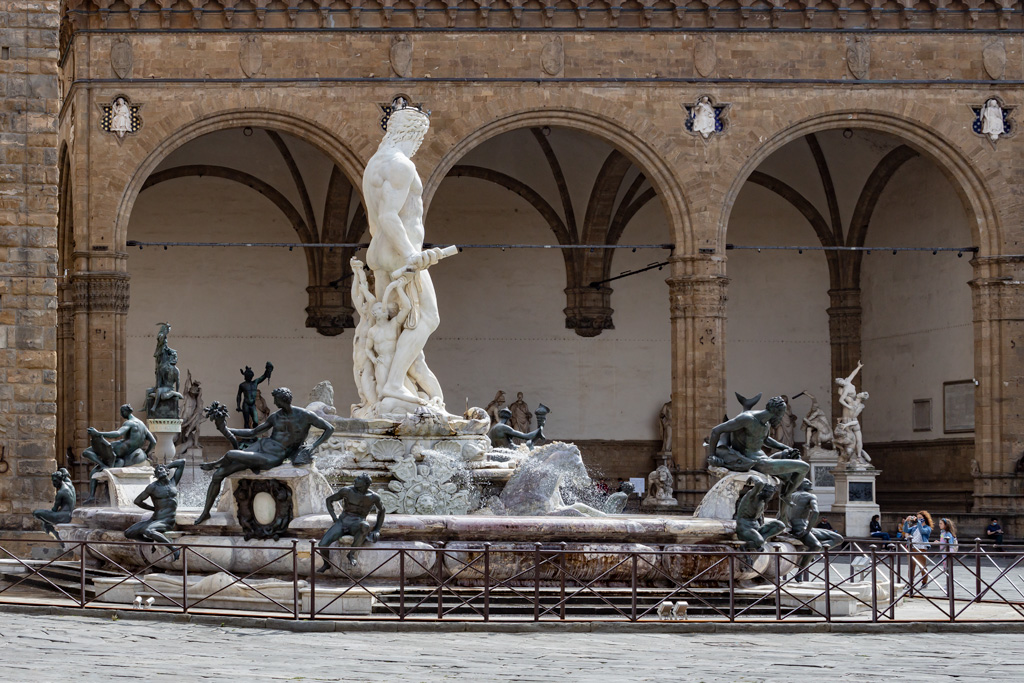
Piazza della Signoria is also an open-air sculpture museum. First of all for the Loggia dei Lanzi, with masterpieces such as the Perseus by Cellini, but also for the Fountain of Neptune by Ammannati, the equestrian statue of Cosimo I by Giambologna, in addition to the Hercules and Caco by Baccio Bandinelli and the copy of David by Michelangelo.
The Uffizi Gallery
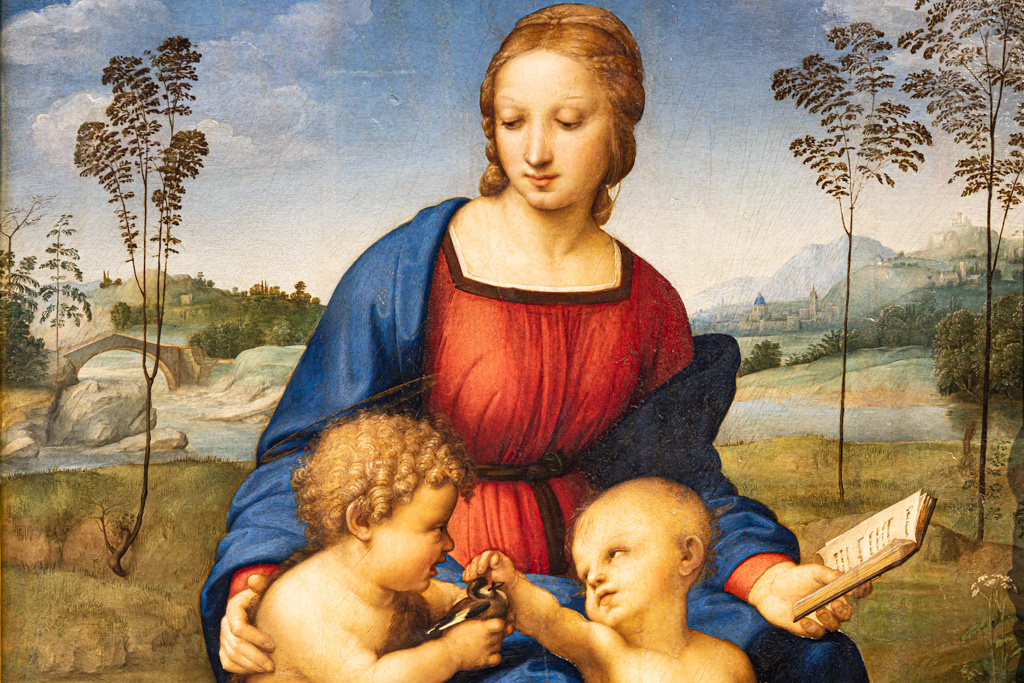
A museum that houses an impressive collection of works of inestimable value, whose original nucleus derives from the Medici collections. The visit is a journey into beauty: from Giotto to Botticelli, and then Mantegna,Leonardo, Michelangelo, Bronzino. And Pontormo, Giorgione, Tiziano, Veronese…
Galleria degli Uffizi
Galileo Museum
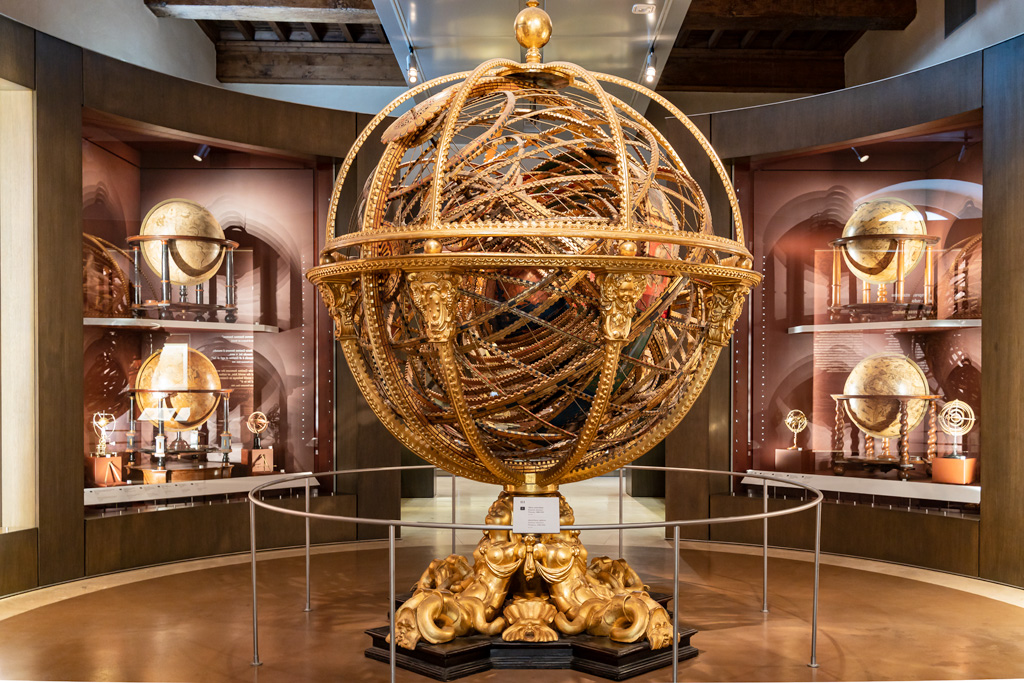
A very engaging museum for both adults and younger visitors, which presents one of the most important collections of scientific instruments in the world, which derives from the precious belongings of the Medici and Lorraine. A fascinating exploration into science.
Galileo Museum
The Florentine Badia
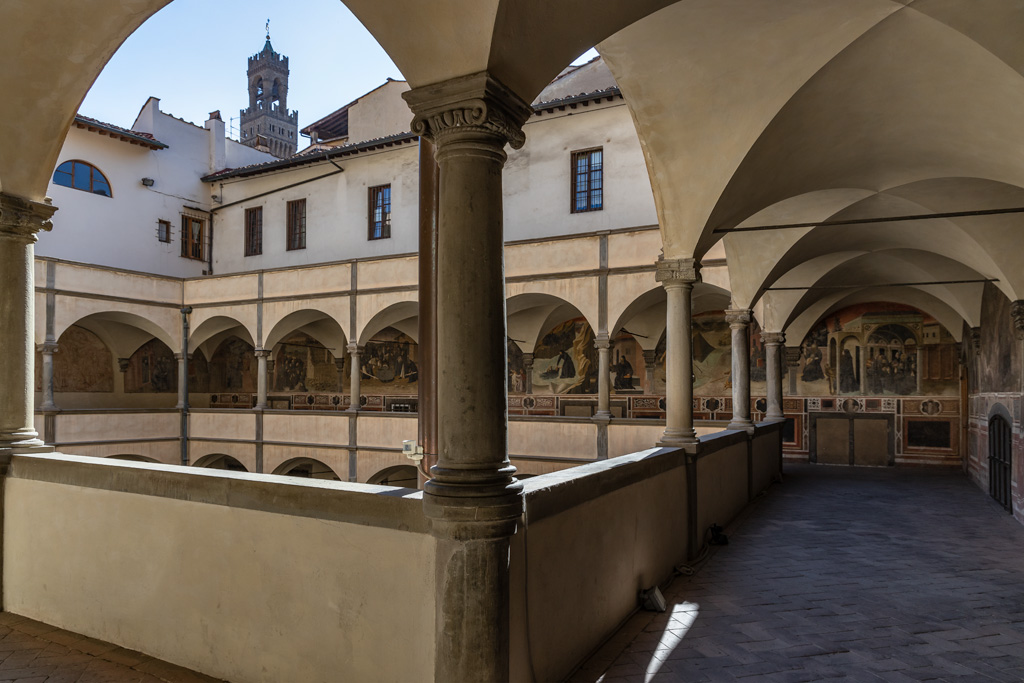
The Abbey of S. Maria, one of the five ancient abbeys in the territory of Florence, preserves some treasures such as Filippino Lippi's The Apparition of the Virgin to San Bernardo. The Cloister of the Aranci is very suggestive, frescoed by Giovanni di Consalvo in the Renaissance period.
The Buonomini Oratory
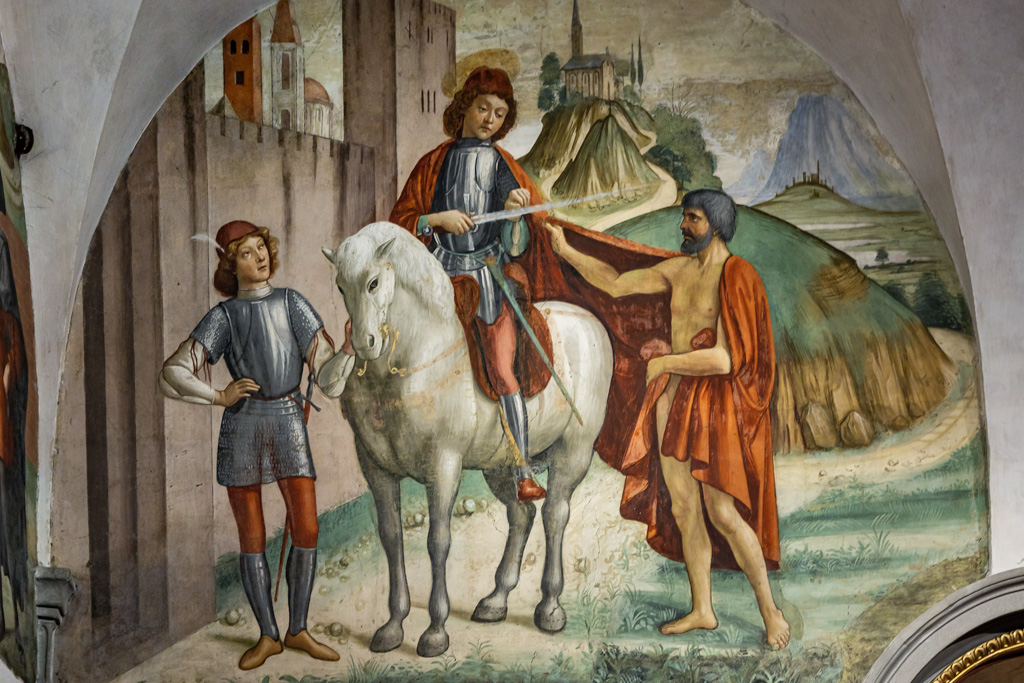
In 1441 the Confraternity of Buonomini di St. Martin was founded to help the “shameful poor”, that is, the well-to-do families who had fallen on hard times. The ancient Church of St. Martin was entrusted to this aid brotherhood and was then decorated with the frescoes Stories of St. Martin and Works of Mercy. The oratory is a little gem.
Buonomini Oratory
Bargello Museum
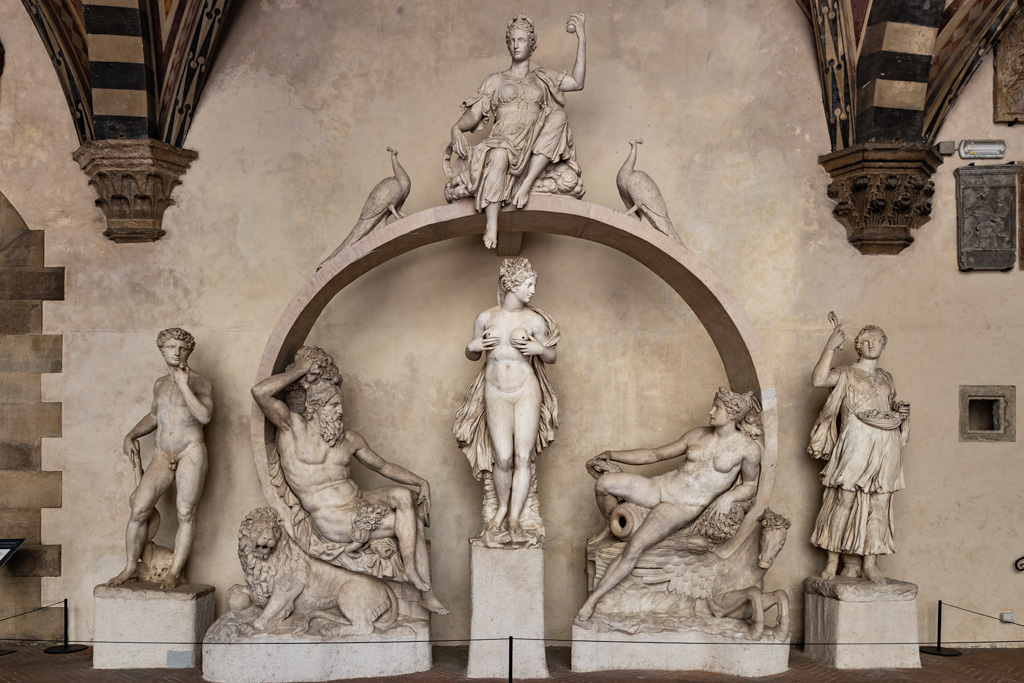
One of the finest collections of Renaissance sculpture is exhibited at the Bargello Museum, which is located in the ancient Palazzo del Podestà in Florence. In addition to the statues by Ghiberti, Michelangelo, Donatello, Cellini and many other masters, the exhibition includes a large collection of works of applied arts.
Bargello Museum
The Ethnological and Anthropological Museum
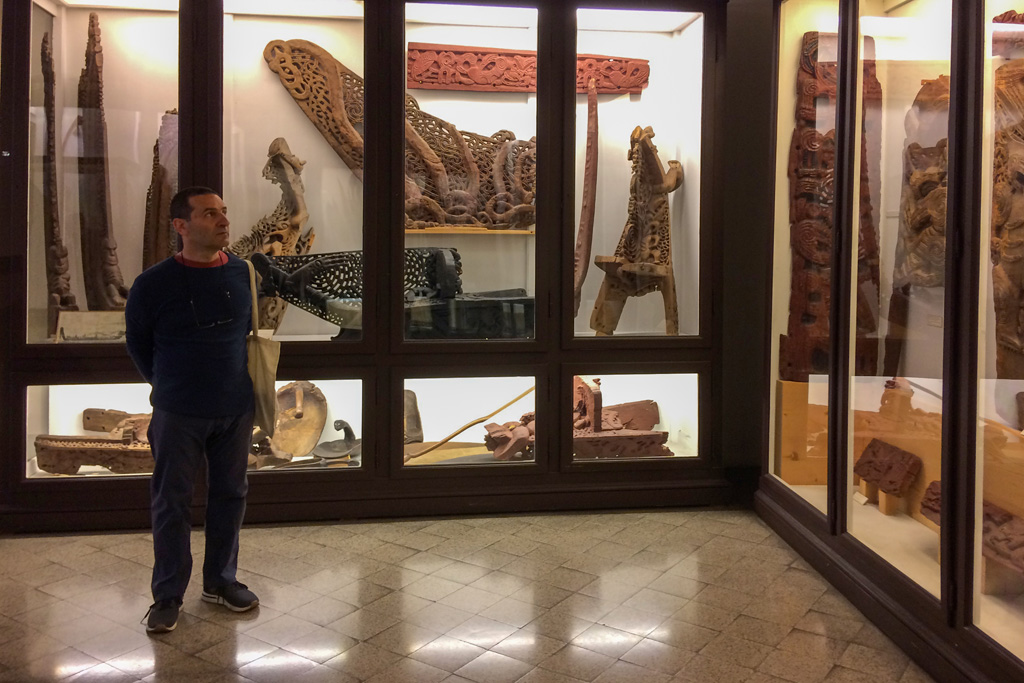
The Earth and its inhabitants are shown in a fascinating museum that presents the customs and traditions of the people in every continent through rich collections of clothes, jewels, objects of worship, weapons, tools for agriculture, fishing and domestic life, musical instruments, etc.
Ethnological and Anthropological Museum
Santa Croce Area
Basilica of Santa Croce
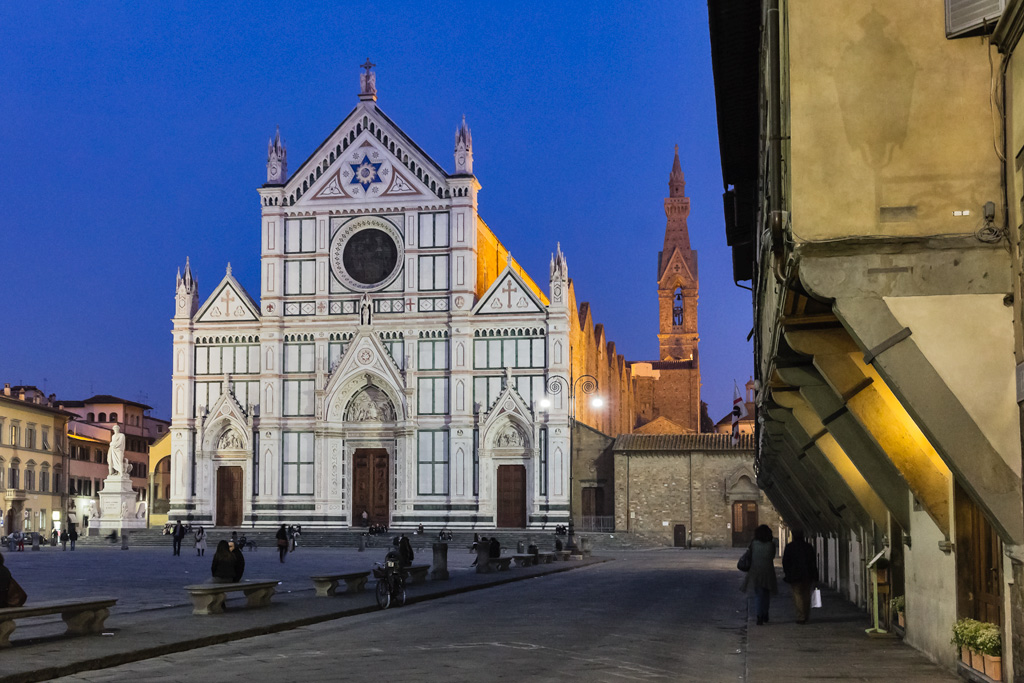
This Church is one of the most important examples of the Italian Gothic style. The Basilica of Santa Croce is also a treasure chest of works of art including the Peruzzi and Bardi chapels frescoed by Giotto, the Main Chapel decorated by Agnolo Gaddi, the Crucifix and the Annunciation Cavalcanti by Donatello. Here also rests Michelangelo, one of the greatest geniuses of the Renaissance.
Basilica di Santa Croce
Horne Museum
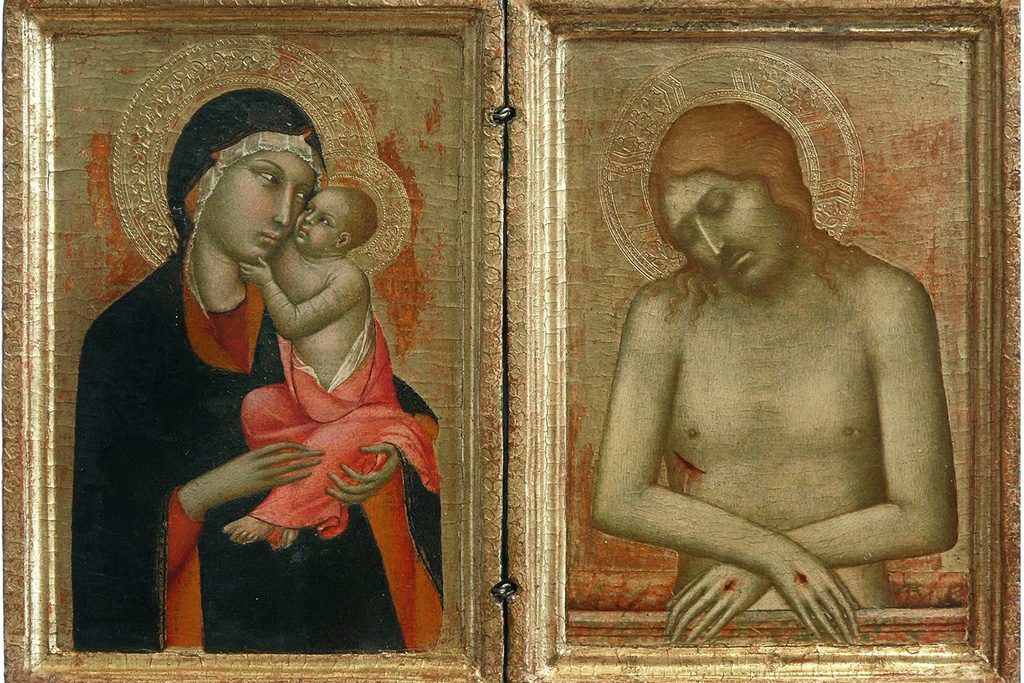
The Museum, near the Ponte alle Grazie, was founded thanks to the bequest of the art historian Herbert Percy Horne and it recreate some rooms of an ancient Florentine house with their furniture, antiques, works of art including a collection of fourteenth and fifteenth century panel paintings.
Horne Museum
Casa Buonarroti
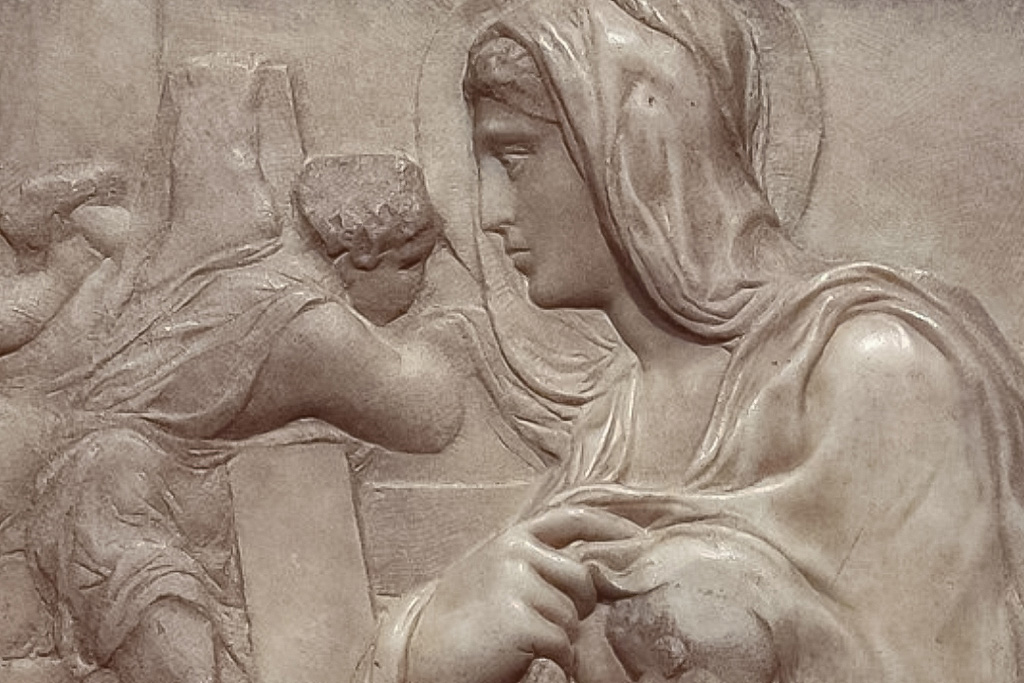
It is a museum dedicated not only to Michelangelo, but also to the Buonarroti family. In addition to some works by Michelangelo such as the Madonna della Scala and Battle of the Centaurs reliefs, the museum presents the refined art belongings collected by the Buonarroti family over the centuries.
Casa Buonarroti
Church of Sant’Ambrogio
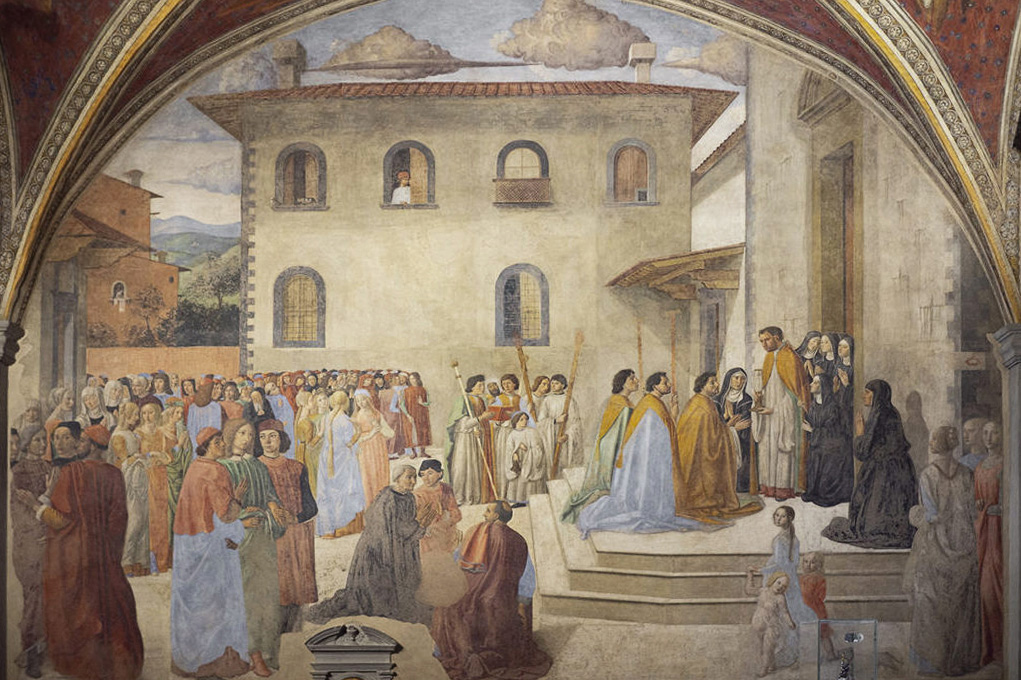
The Church of Sant’Ambrogio, which is located near the synagogue and has a single nave and numerous fourteenth-century works, stands out for the fifteenth-century frescoes by Cosimo Rosselli in the Chapel of the Miracle of the Sacrament.
Piazza dei Ciompi
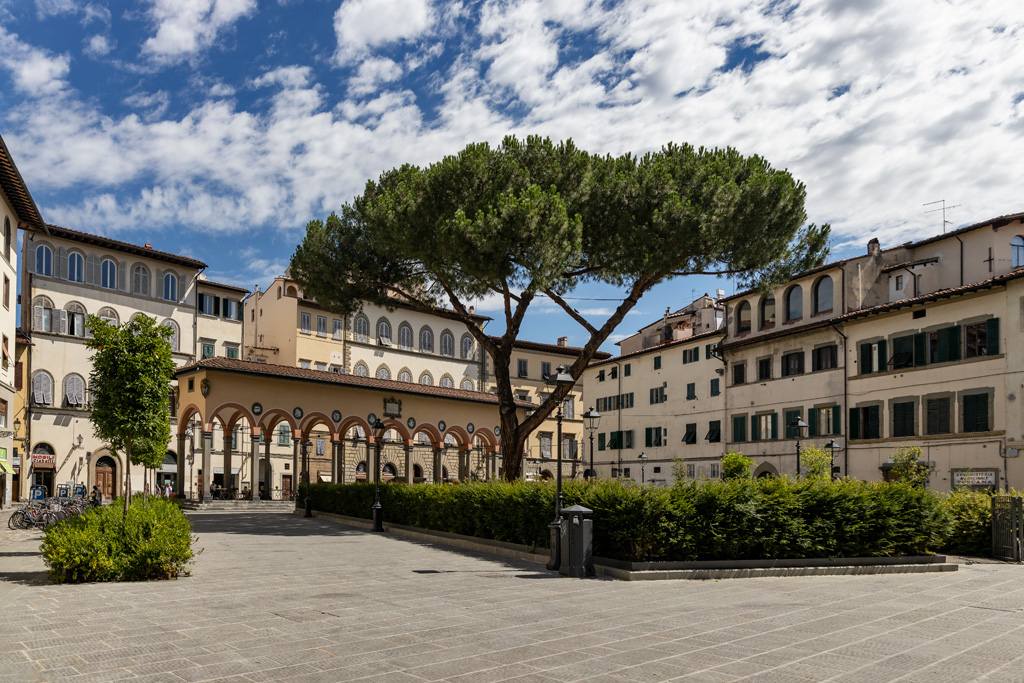
Piazza dei Ciompi, at short distance from the Basilica of Santa Croce, is a large square where in the 1950s the Loggia del Pesce, a sixteenth-century building by Giorgio Vasari that was initially located in the Old Market, was moved.
Santa Maria Novella Area
Basilica of Santa Maria Novella
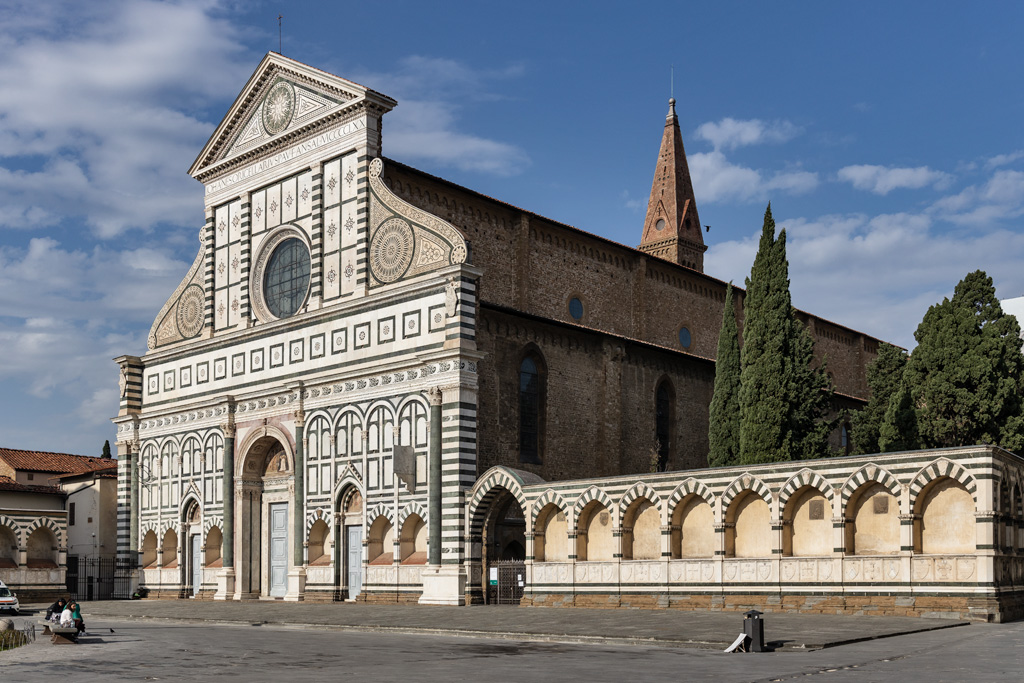
The Basilica, a few steps from the train station, is one of the most beautiful and richest churches in the city. Its naves, chapels, cloisters and refectory are enriched by masterpieces by Giotto, Paolo Uccello, Ghirlandaio, Filippino Lippi, Benedetto da Maiano, Andrea Orcagna, Filippo Brunelleschi, Masaccio, Pontormo, Vasari, Bronzino.
Santa Maria Novella
Novecento Museum
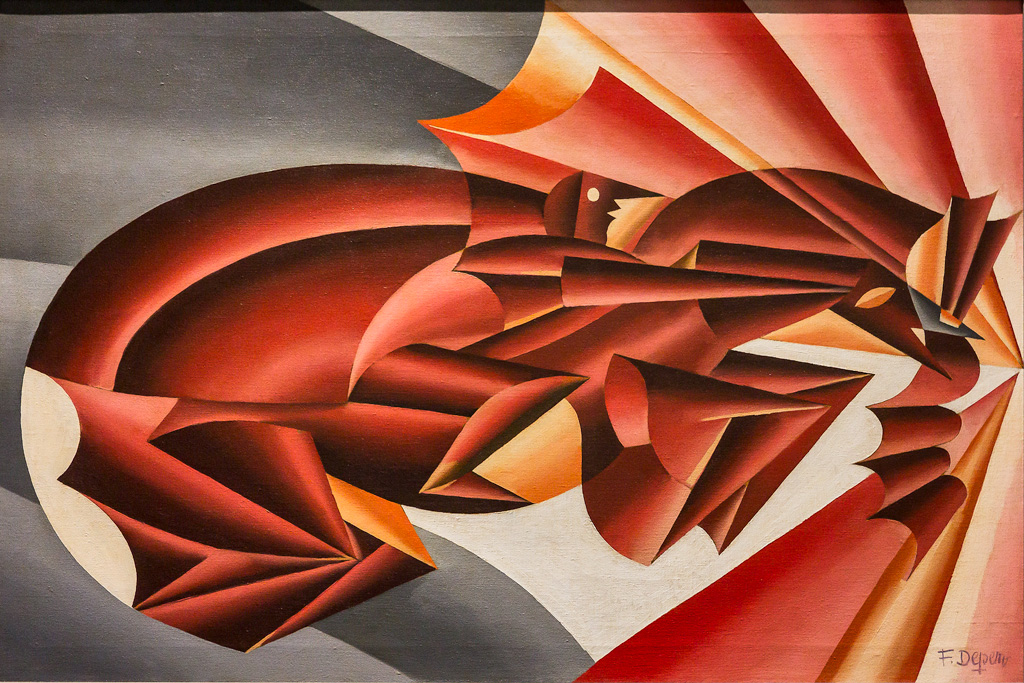
The Novecento Museum was inaugurated in 2014 and it is located inside the ancient Spedale delle Leopoldine right in front of the Basilica of Santa Maria Novella. It houses about 300 works by great masters of 20th and 21st centuries art such as Ottone Rosai, Giorgio De Chirico, Filippo De Pisis, Gino Severini, Giorgio Morandi, Mario Mafai, Renato Guttuso, Felice Casorati.
Novecento Museum
Marino Marini Museum

Dazzled by the beauty of Florence and by its important museums such as the Uffizi, tourists often waste the opportunity to visit the museum dedicated to Marino Marini, one of the greatest artists of the twentieth century. The museum stands out not only for the collections of paintings and sculptures by the Pistoian master, but above all for the refined and engaging conversion of the Church of San Pancrazio into a museum space designed by architects Lorenzo Papi and Bruno Sacchi.
Marino Marini Museum
Temple of the Holy Sepulchre

Inside the former Church of San Pancrazio, now the Marino Marini Museum, you can access a chapel where the Temple of the Holy Sepulchre is located, a chapel designed by Leon Battista Alberti on behalf of the Rucellai family around 1467. Made of white and green marble and decorated with 30 inlays, this splendid Renaissance work houses the tomb of Giovanni Rucellai.
San Lorenzo Area
Basilica of San Lorenzo
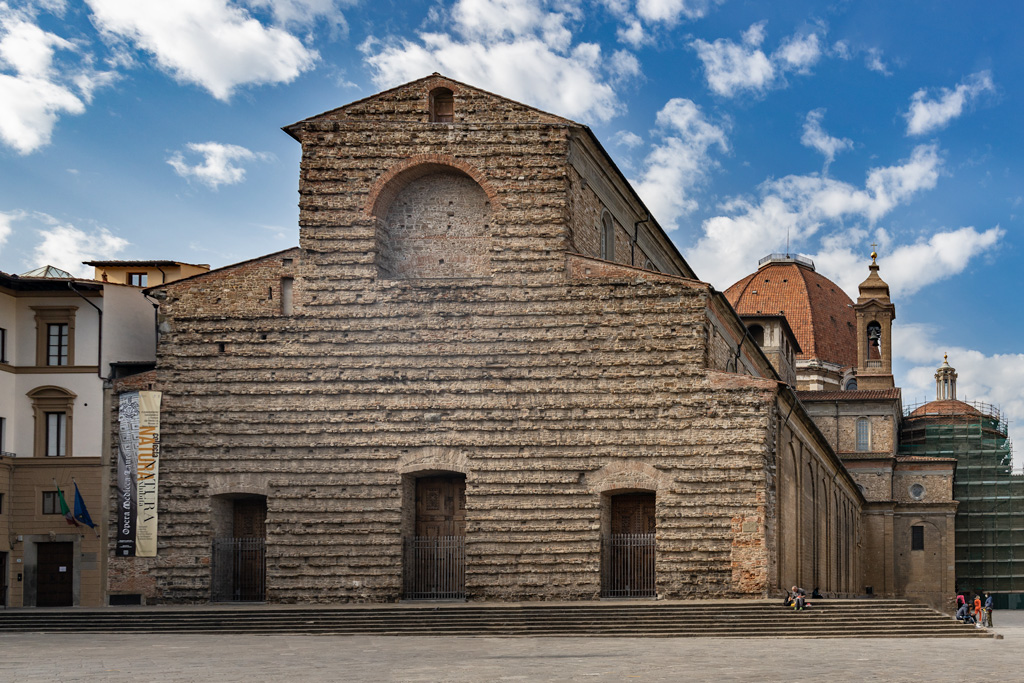
One of the oldest places of worship in Florence is the Basilica of San Lorenzo, known above all for the rough facade by Michelangelo that was never completed. Inside the basilica you can admire works by great masters, including Rosso Fiorentino, Desiderio da Settignano, Antonio del Pollaiolo.
Opera Medicea Laurenziana
Medici Chapels Museum
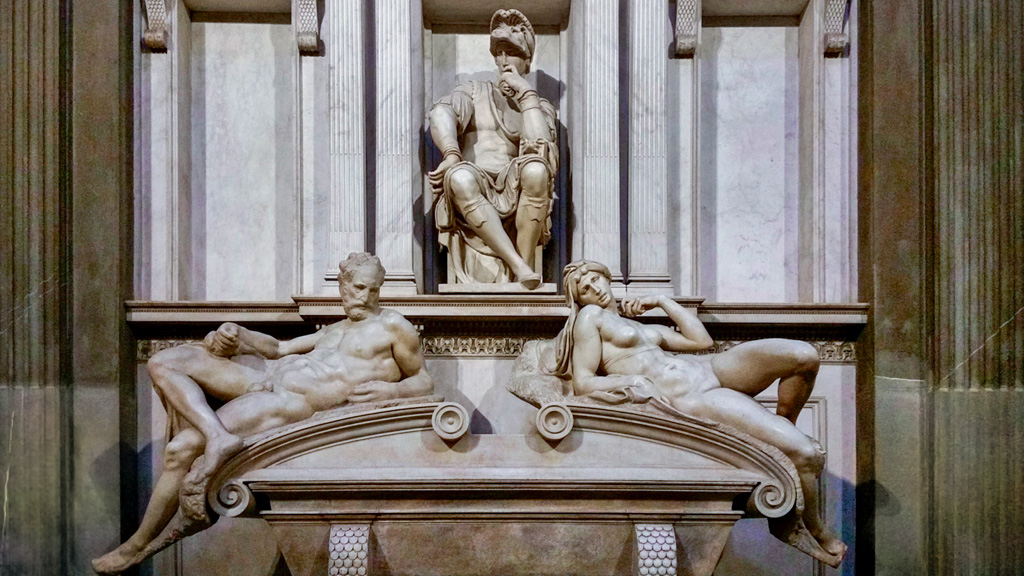
The Chapel of the Princes, surmounted by the dome of S. Lorenzo and characterized by sumptuous inlays in semi-precious stone, is an absolute unicum and houses some grand-ducal tombs. In the New Sacristy, built between 1521 and 1534, you can see the sepulchral monuments created for Giuliano de Medici and Lorenzo de Medici by Michelangelo.
Medici Chapels
Medici Riccardi Palace
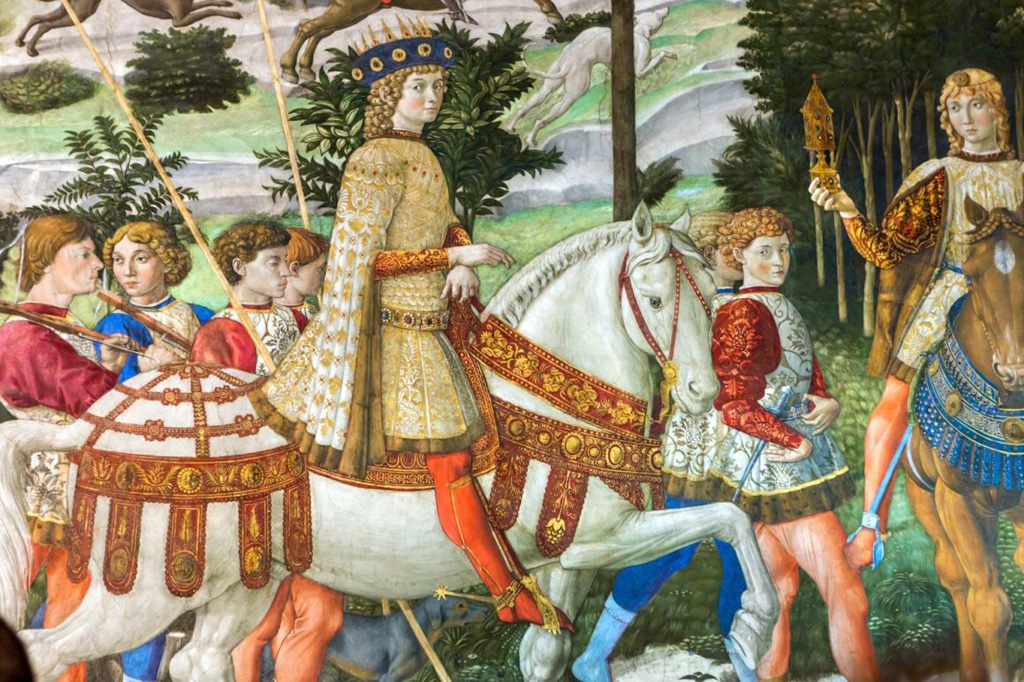
The palace designed by Michelozzo, which Cosimo the Elder wanted as the residence of the Medici, is not only the home of the most important Florentine family, but also the cradle of the Renaissance. Benozzo Gozzoli realised the colourful frescoes in the Cappella dei Magi where the members of the family are sumptuously represented.
Medici Riccardi Palace
Casa Martelli Museum
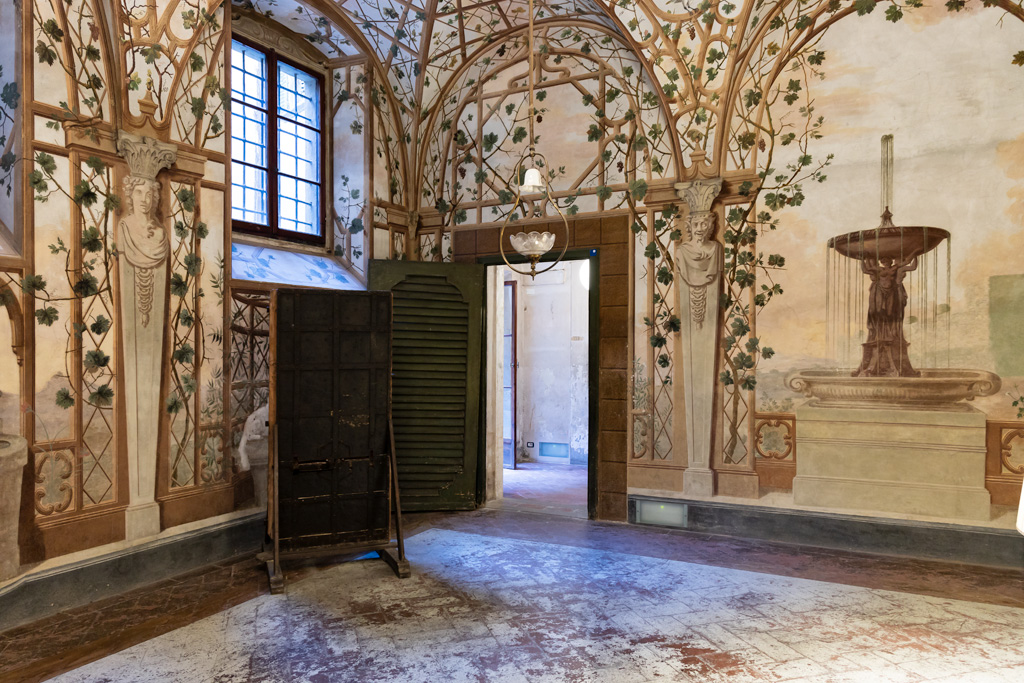
In this museum, you have the opportunity to visit the house of one of the oldest Florentine families. The itinerary starts from the staircase and then reaches the picture gallery, the rooms on the main floor, the yellow and red halls, the chapel, the ballroom. The collection of works of art was created between the 17th and 18th centuries.
Musei del Bargello, Casa Martelli
Ognissanti Area
Basilica of Santa Trinita
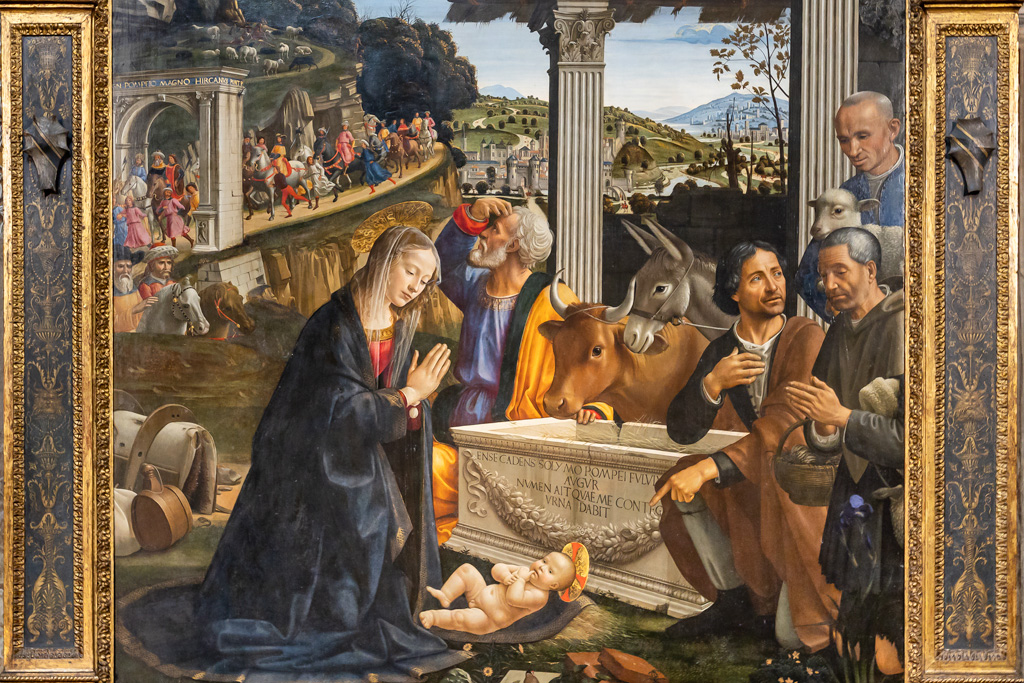
The Basilica of Santa Trinita, a few steps from the Arno and from the bridge to which it gives its name, preserves numerous works of great importance including the frescoes of the Sassetti Chapel with the Stories of St. Francis and the wonderful altarpiece The Adoration of the Shepherds by Domenico Ghirlandaio.
Roberto Casamonti Collection
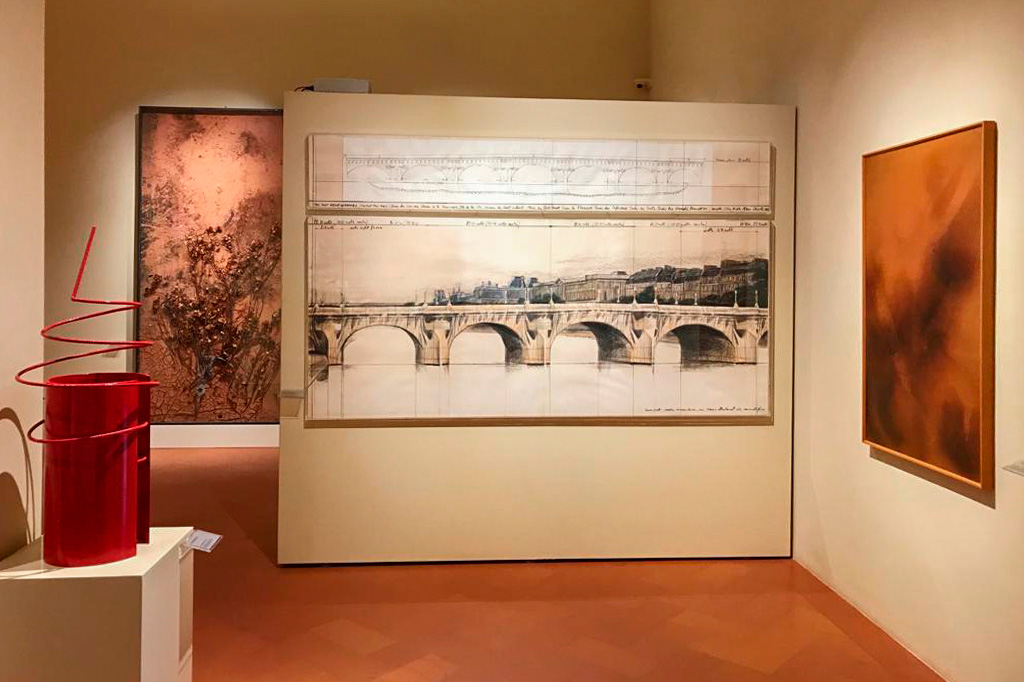
The museum that exhibits the Roberto Casamonti's collection of modern and contemporary art is housed in the elegant Renaissance Bartolini Salimbeni Palace in via Tornabuoni. The corpus of the collection is divided into two parts that are shown alternatively to the public: the first one includes works from the early decades of the twentieth century to the sixties, the second one includes works from the mid-sixties to contemporaneity.
Casamonti Collection
Church of Ognissanti
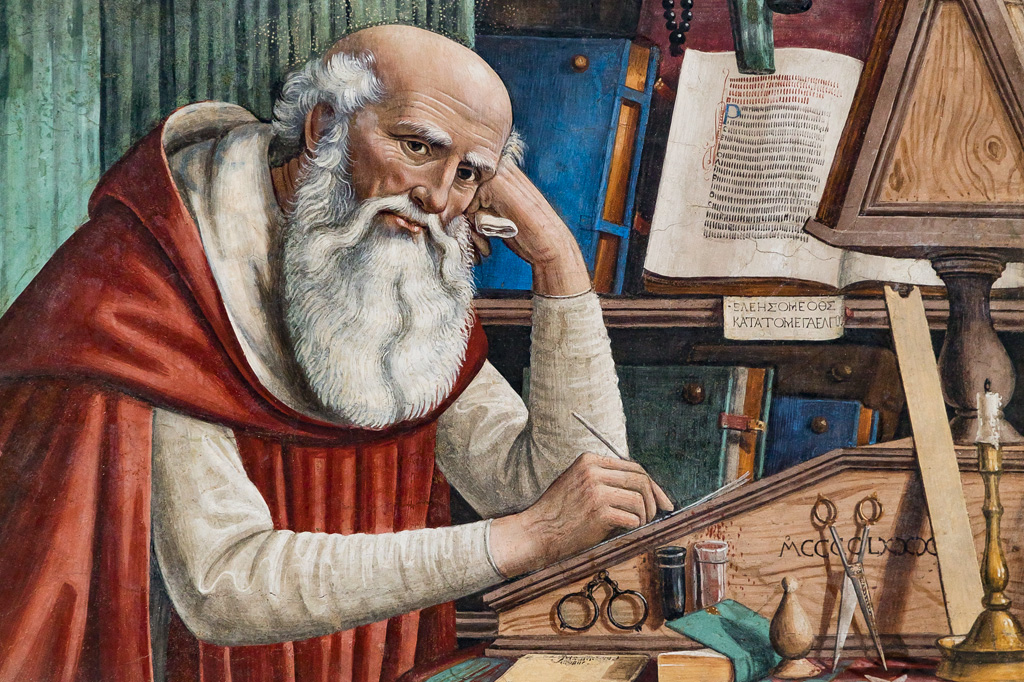
n the thirteenth century the church was part of the convent of the Umiliati, a religious order whose monks worked on the processing of wool. Later, thanks to the wealth of the Umiliati, the church acquired several works of art. Today it still houses the S. Girolamo by Ghirlandaio and the S. Agostino by Botticelli, who is buried in this church.
San Marco Area
Gallery of The Academy
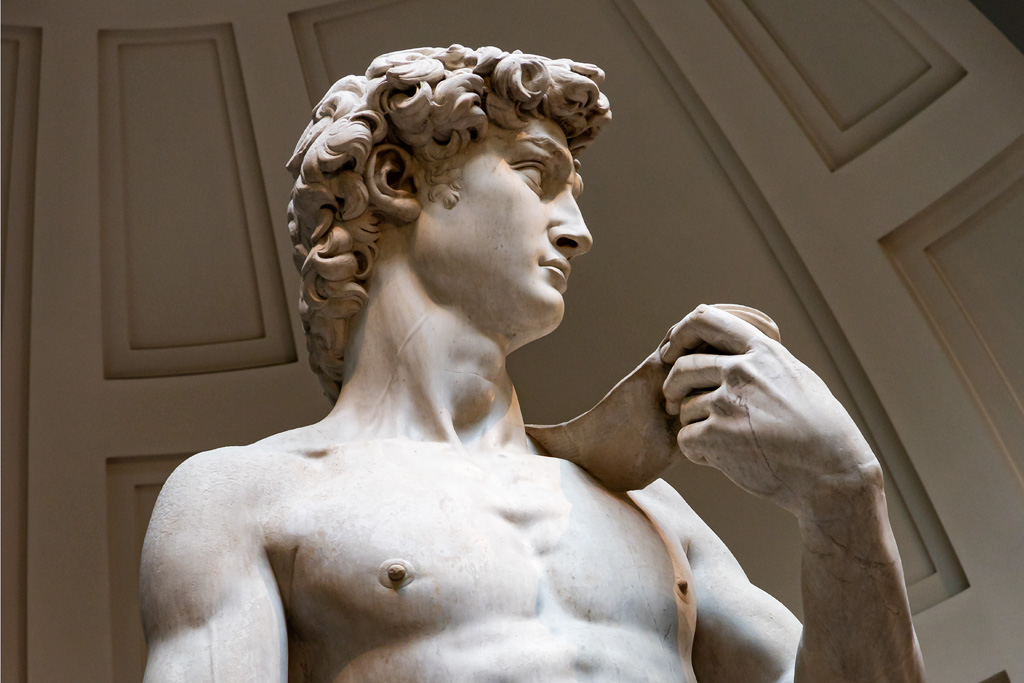
In addition to exhibiting a large number of Michelangelo's masterpieces such as the statue of David, the museum presents works from the thirteenth and fourteenth centuries, including one of the most important collections of tables on golden background in the world, paintings by the great masters of the Florentine Renaissance (Perugino, Botticelli, Lippi, Ghirlandaio), a collection of Russian icons and one of musical instruments.
Gallery of the Academy
San Marco Museum
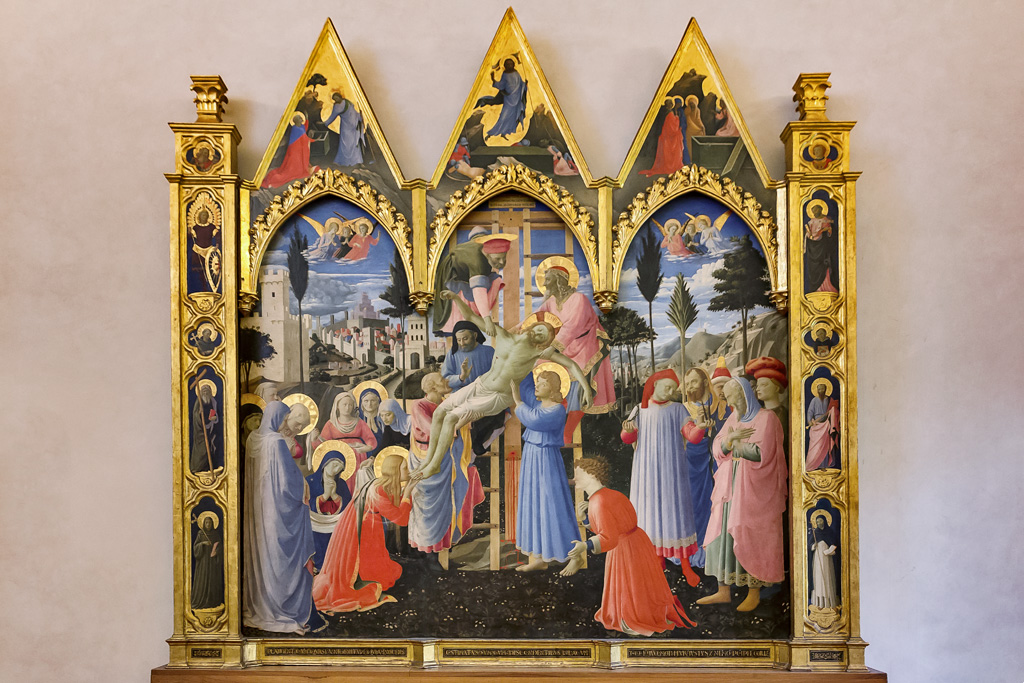
In the convent of San Marco, which was built in the mid-fifteenth century by Michelozzo, there is a museum of great importance that houses masterpieces by artists such as Ghirlandaio and Fra Bartolomeo. The best known works are the Annunciation and the frescoes by Beato Angelico in the monks' cells.
San Marco Museum
The Botanical Garden
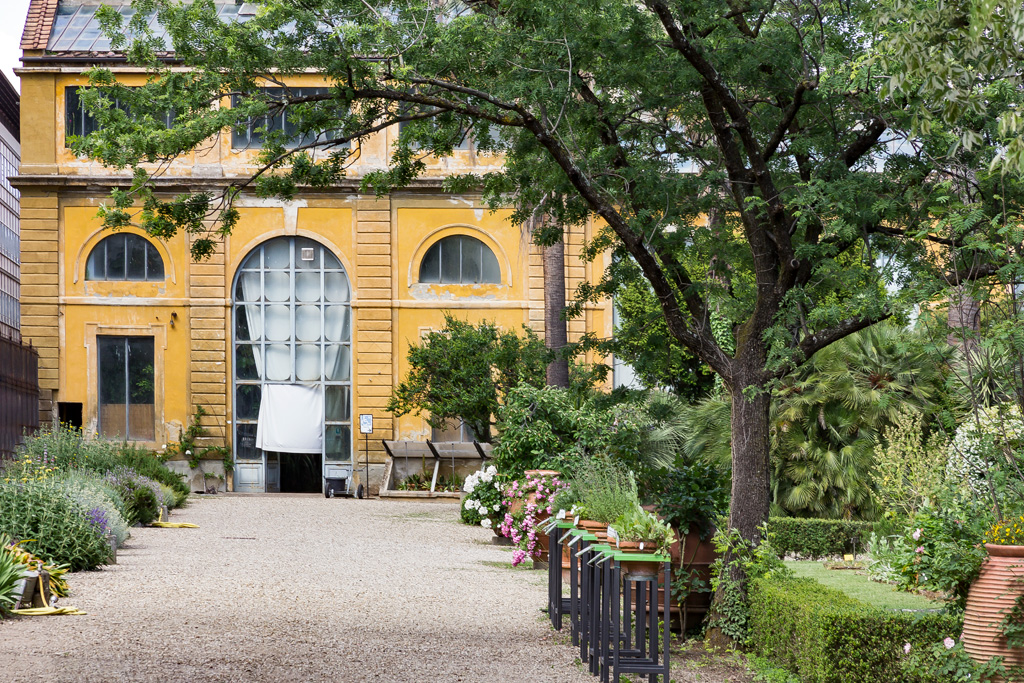
The walk in the Giardino dei Semplici in Florence, one of the oldest botanical gardens in the world, is very pleasant. It covers an area of over two hectares divided between outdoor and greenhouse botanical collections. The design of the flower beds refers both to the model of the medieval Hortus conclusus and to the layout of the gardens of the Renaissance villas.
Botanical Garden
Basilica of Santissima Annunziata
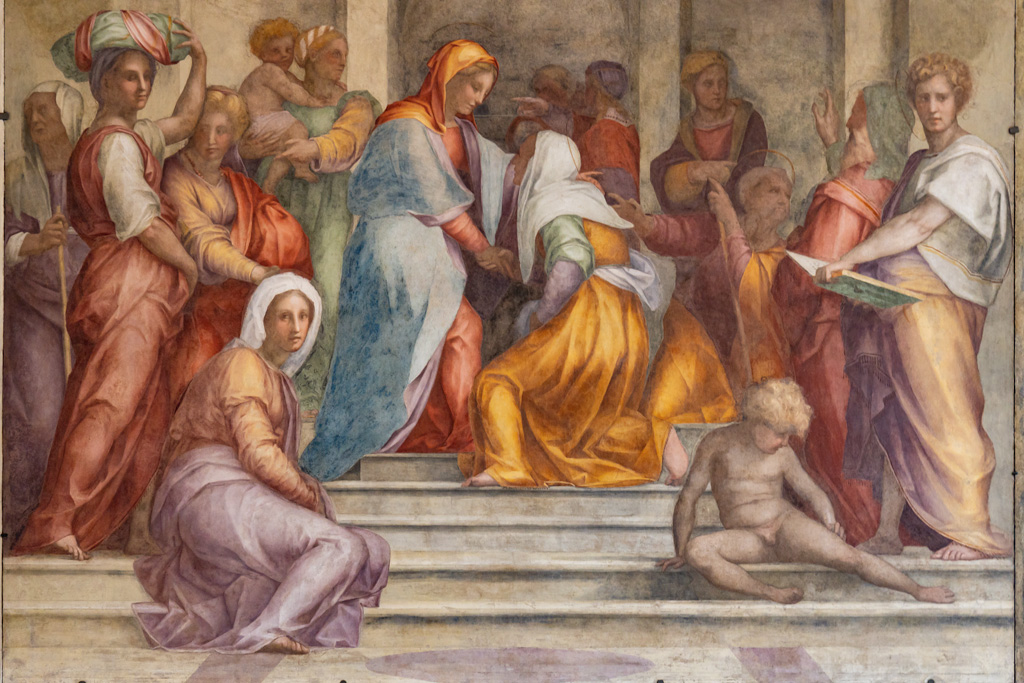
This church, which overlooks the beautiful square with the same name, is one of the richest in Florence. Its interior is spectacular: it has copiously decorated ceilings, marble floors, chapels that house important works of art. The Cloister of the Votive Objects, which has given space to the work by Pontormo, Andrea del Sarto and Rosso Fiorentino, is particularly interesting.
Spedale degli Innocenti
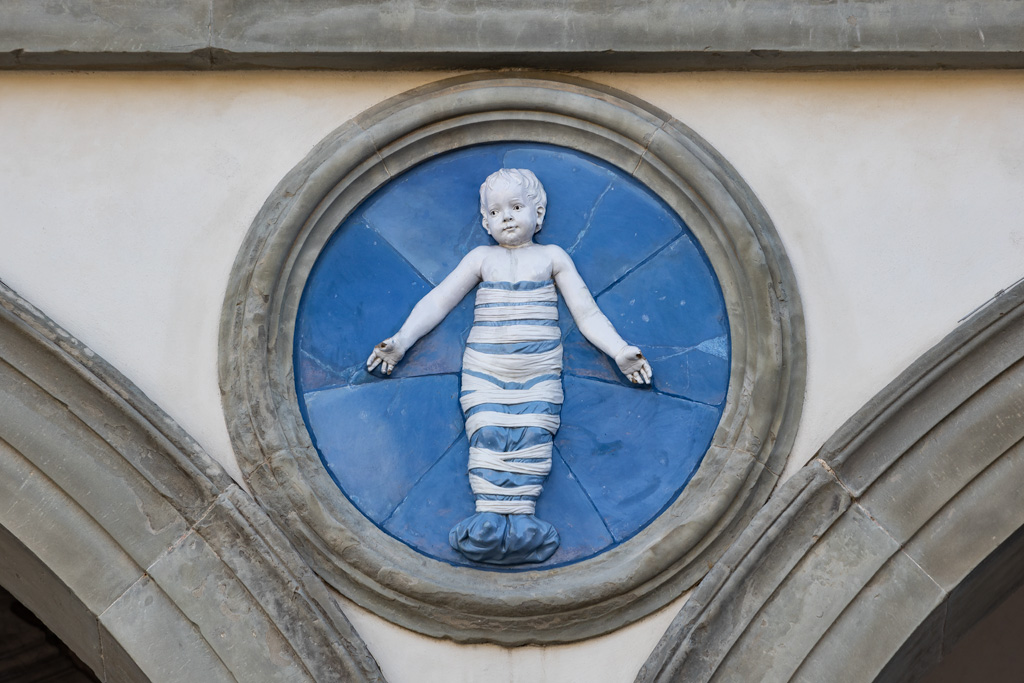
The hospital for abandoned children turns out to be the first orphanage in the world. The building has another record: it is one of the first buildings in the Renaissance style designed by Filippo Brunelleschi. The Museum degli Innocenti, in addition to exhibiting masterpieces of Tuscan art, has a sector dedicated to the history of this institution in favour of children over the centuries.
Istituto degli Innocenti
National Archaelogical Museum
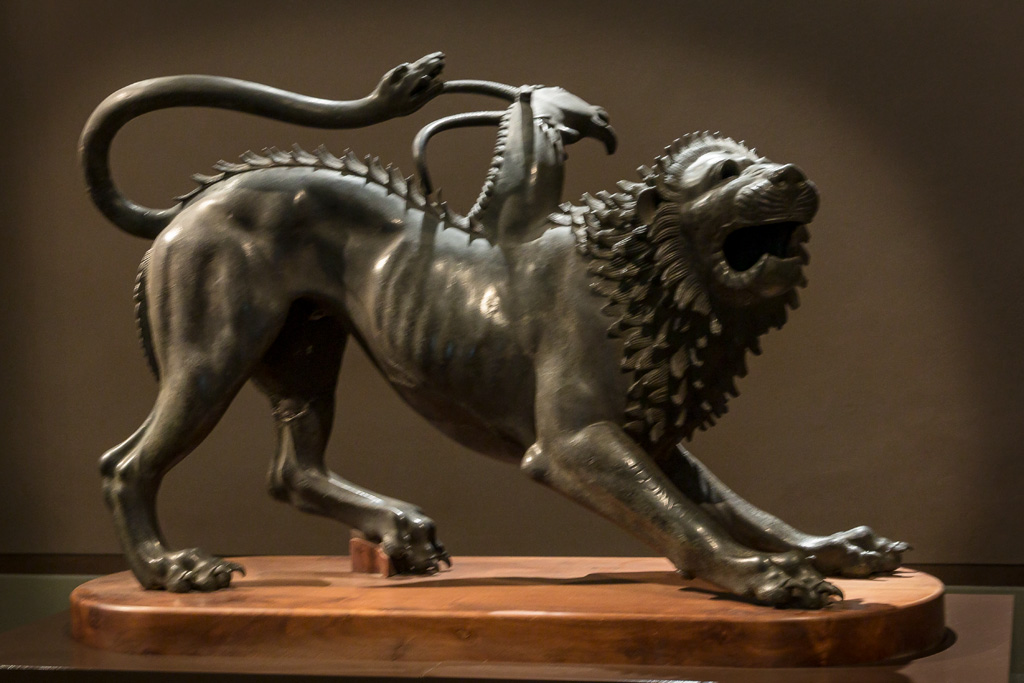
A museum of great importance which has various sections: the Etruscan one whose most important pieces are the Chimera of Arezzo and the collection of funerary sculptures, that of ancient Greek and Roman finds from the private collections of the Medici and Lorraine and the Egyptian one which, in Italy, is second only to the Egyptian Museum in Turin.
National Archaelogical Museum
Museum of the Opificio delle Pietre Dure
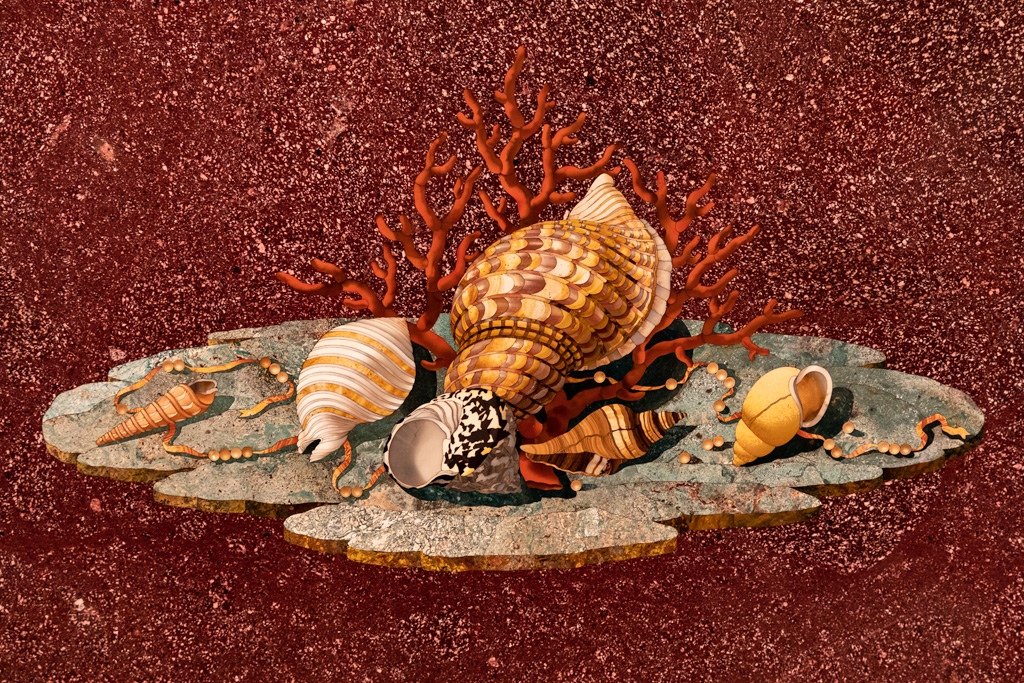
On the ground floor of one of the most important institutes for restoration, there is a museum that exhibits an amazing collection of artefacts in semi-precious stones. It is the art of the Florentine inlaid semi-precious stone artefacts who, over the centuries, has been used for wardrobes, table tops, plaques and plates decorated mostly with flowers, fruit and animals.
Opificio delle Pietre Dure Museum
Pergola Theatre

It is only through a guided tour that you can visit one of the oldest theatres in Florence. You have the chance to admire not only the stage, but also what is behind the scenes and the undergrounds that store part of the scenic machine used for the staging of the shows.
Pergola Theatre
Oltrarno
Ponte Vecchio
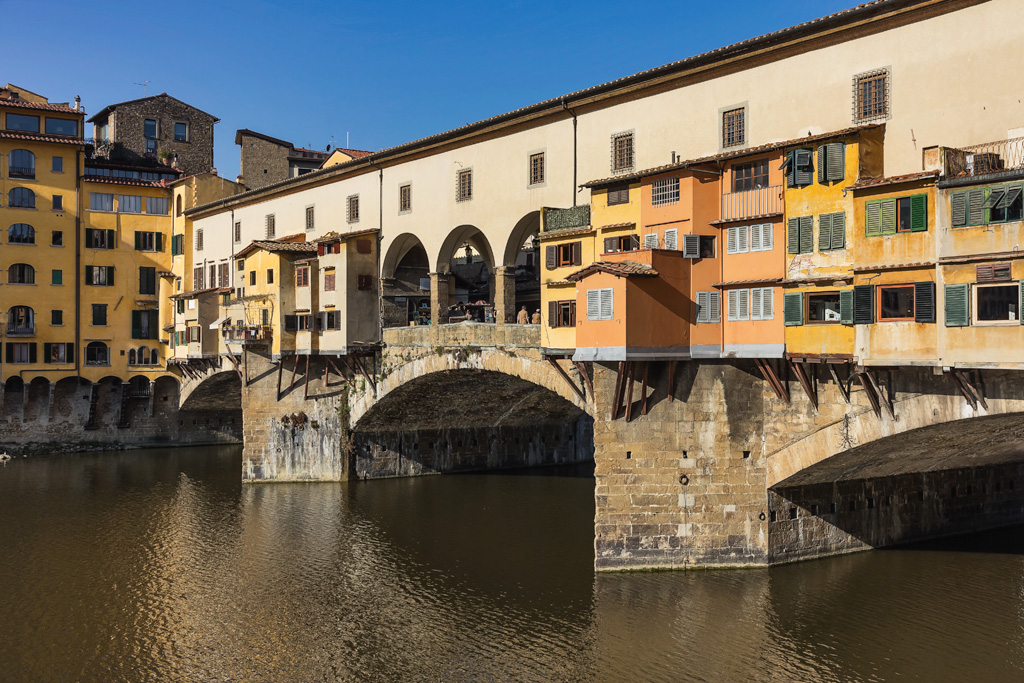
It is one of the symbols of Florence and one of the oldest bridges in the city. It crosses the Arno and connects the historic centre to Oltrarno. It is dominated by the Vasari Corridor, which was built in 1565 on commission of Cosimo I who wanted an elevated connection between Palazzo Vecchio and Palazzo Pitti, the private residence of the Medici.
Vasari Corridor
Church of Santa Felicita
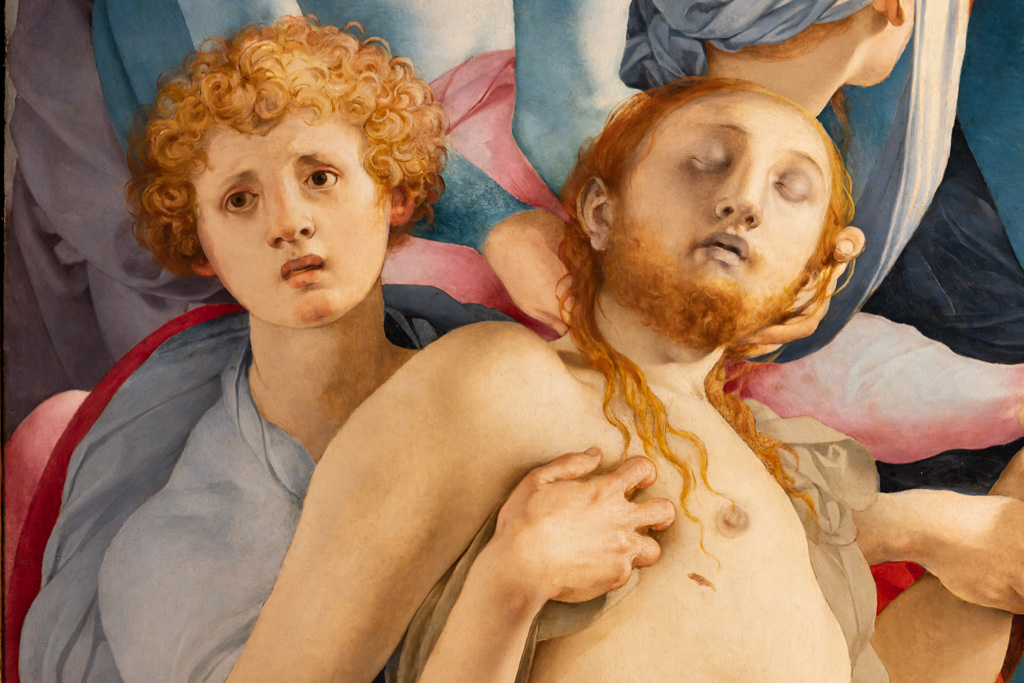
While you are going to the Oltrarno and immediately after crossing Ponte Vecchio, you can stop at the Church of Santa Felicita which houses many works of art. Two masterpieces by Pontormo are of great beauty: the altarpiece of the Deposition and the fresco on the theme of the Annunciation.
Santa Felicita
Pitti Palace
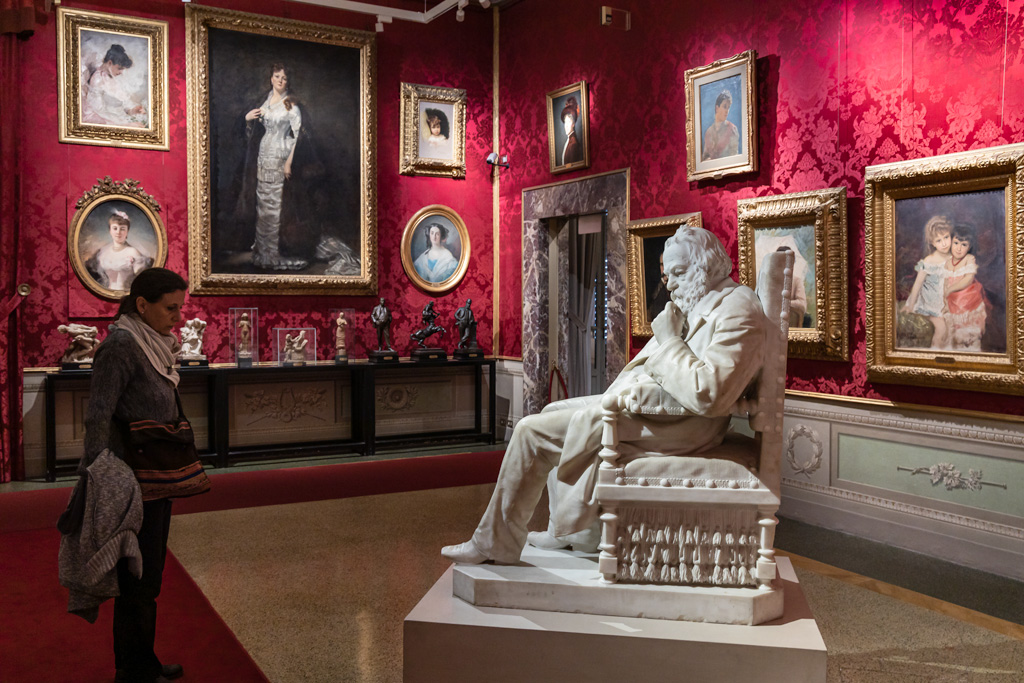
In 1550 Cosimo I de Medici acquired the Palazzo, owned by the banker Luca Pitti, for himself and his beautiful wife, Eleonora di Toledo and made it the grand ducal residence. Afterwards it became the palace for the Habsburg Lorraine and Savoy families. Today it houses four museums: the Treasury of the Grand Dukes, the Palatine Gallery and the Imperial and Royal Apartments, the Gallery of Modern Art and the Museum of Fashion and Costume.
Pitti Palace
Boboli Gardens
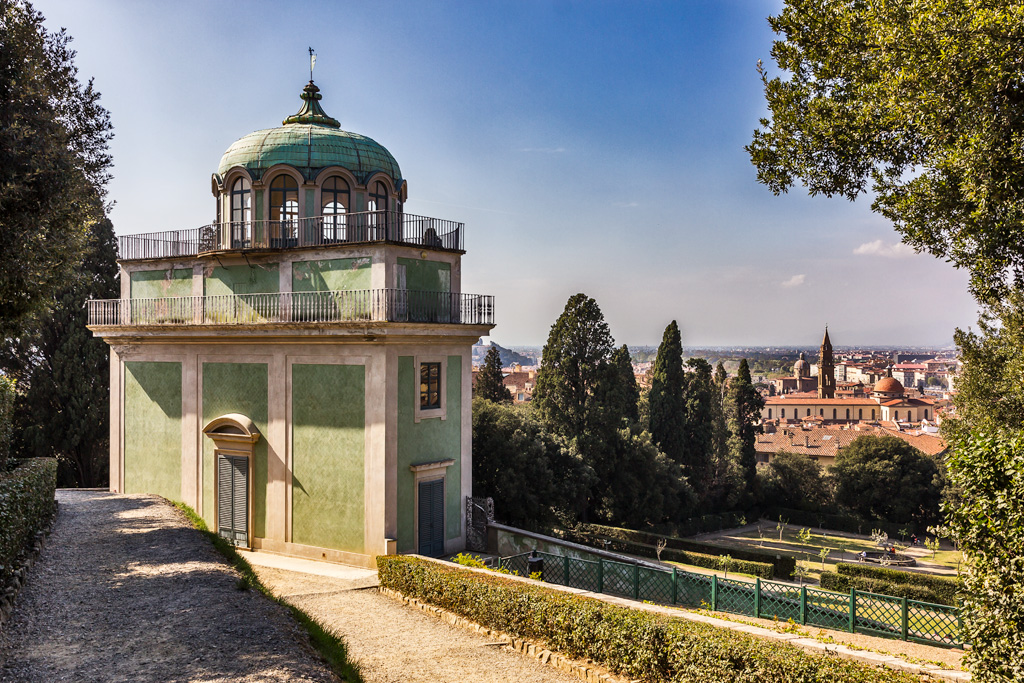
Behind the Pitti Palace you can have a very pleasant walk in the Boboli Gardens, which were designed as a magnificent Italian garden decorated by ancient and Renaissance statues, caves and fountains at the time of the Medici. Over the centuries, this green open-air museum has been enriched with other buildings such as the Kaffeehaus and the Limonaia and with works by artists such as the Polish sculptor Igor Mitoraj.
GBoboli Gardens
Museum of Natural History La Specola
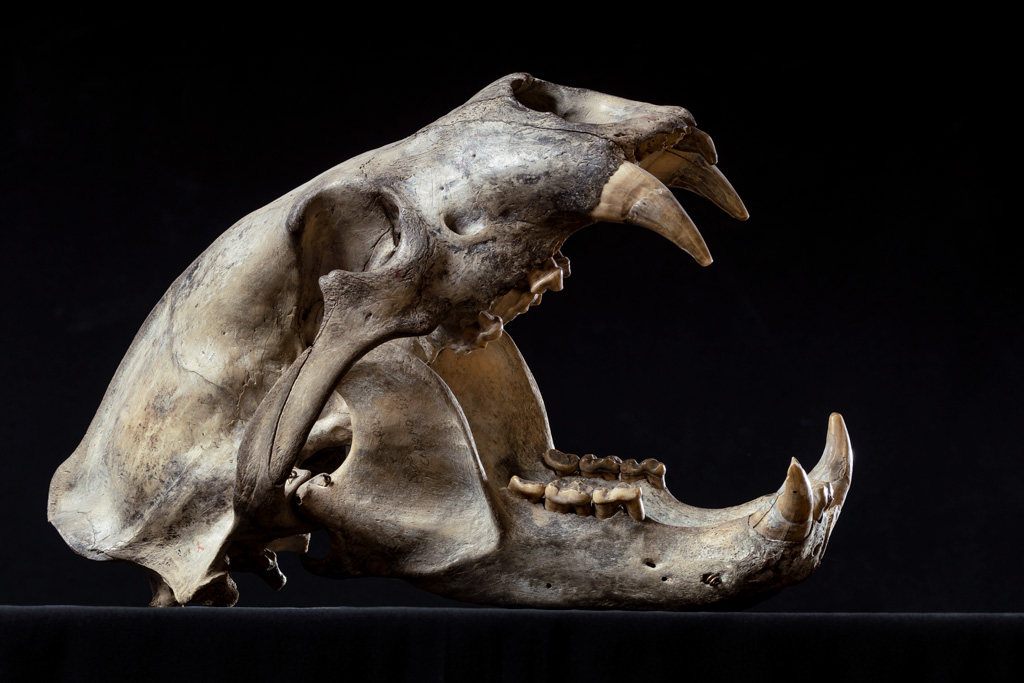
In Oltrarno, the collections of La Specola arouse amazement and curiosity. The zoological collection with over 3 and a half million specimens of which 5,000 on display, the eighteenth-century anatomical waxes, and the collection of skeletons are very impressive.
La Specola Museum
Belvedere Fort
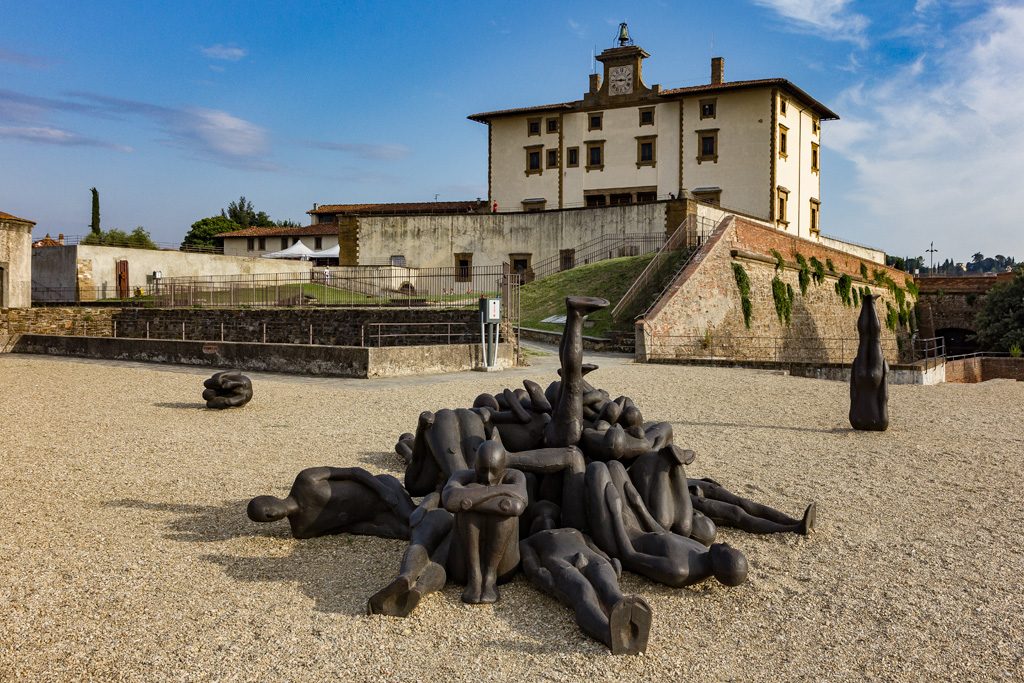
The Fortress of Santa Maria in San Giorgio del Belvedere, built in the last decade of the 16th century on a project by Bernardo Buontalenti at the behest of Ferdinando I de Medici, stands on the highest point of the Boboli hill and offers a wonderful view of both the city and the hills behind Florence which are covered with olive trees.
Belvedere Fortspan>
Basilica of Santo Spirito
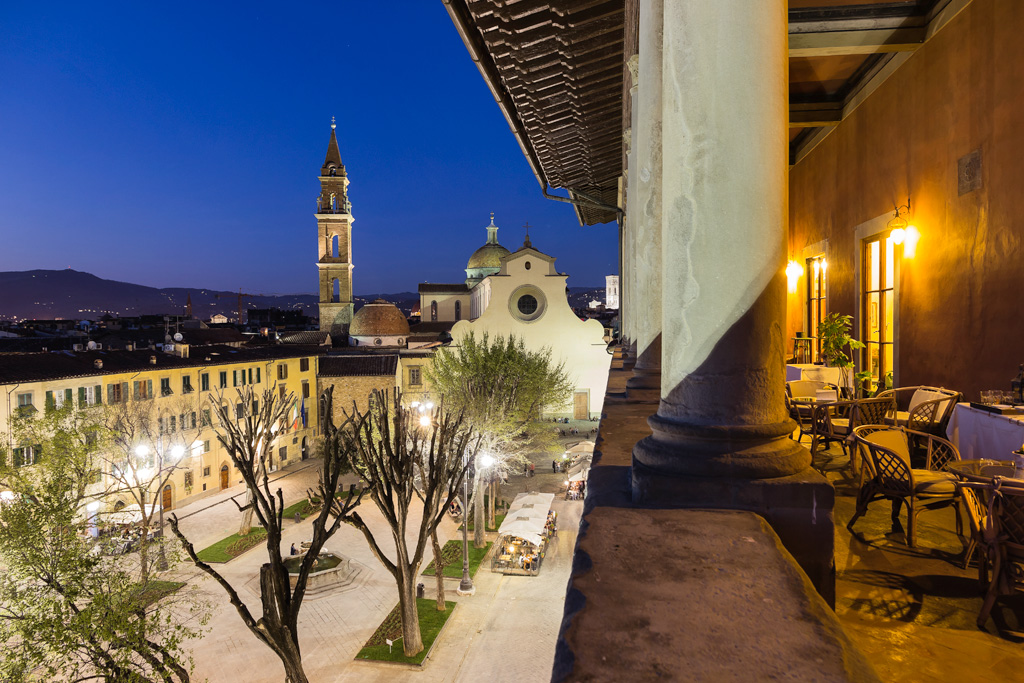
One of the most beautiful squares in Florence is that of Santo Spirito. On its Northern side the homonymous basilica stands. The Renaissance renovation was designed by Filippo Brunelleschi who, however, was unable to complete it. There are plenty of works of art in the basilica. For instance, the wooden crucifix that Michelangelo made at the age of 17 is also preserved there.
Santo Spirito
Brancacci Chapel
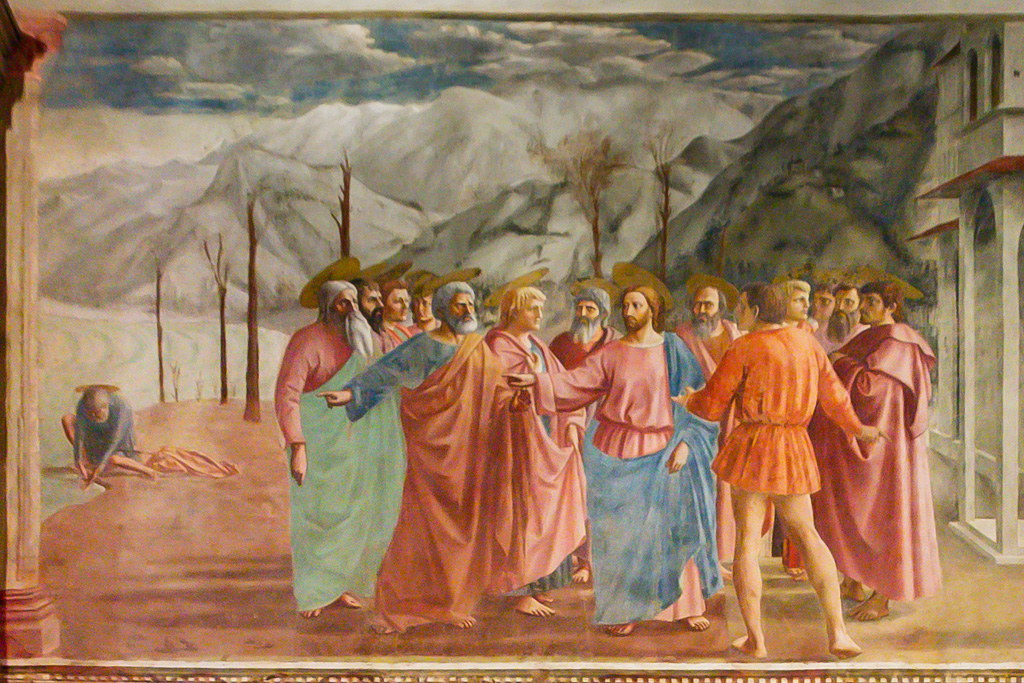
In Oltrarno, inside the Church of S. Maria del Carmine, the Brancacci Chapel is one of the most beautiful examples of Florentine Renaissance painting. The frescoes, which illustrate the life of St. Peter, were painted by Masolino da Panicale with his pupil Masaccio, and by Filippino Lippi.
Brancacci Chapel
Oltrarno - San Miniato Area
Piazzale Michelangelo
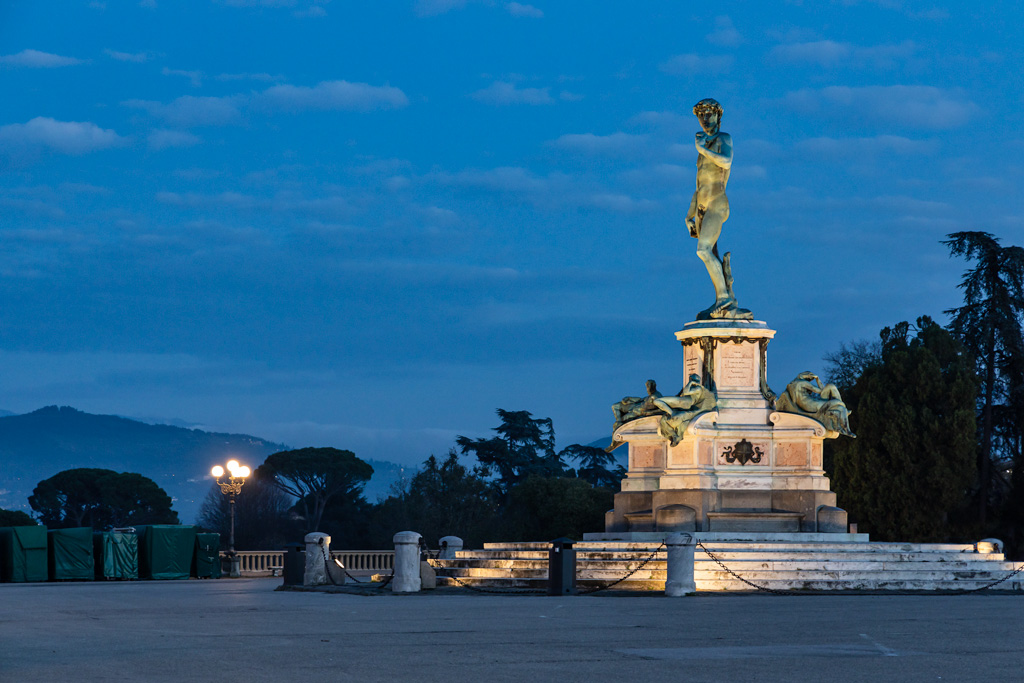
It is the most famous viewpoint of Florence. The terrace, designed by Giuseppe Poggi in 1869, was intended for the celebration of Michelangelo and his works. In fact, there is a bronze copy of David at the centre of the square.
The Rose Garden
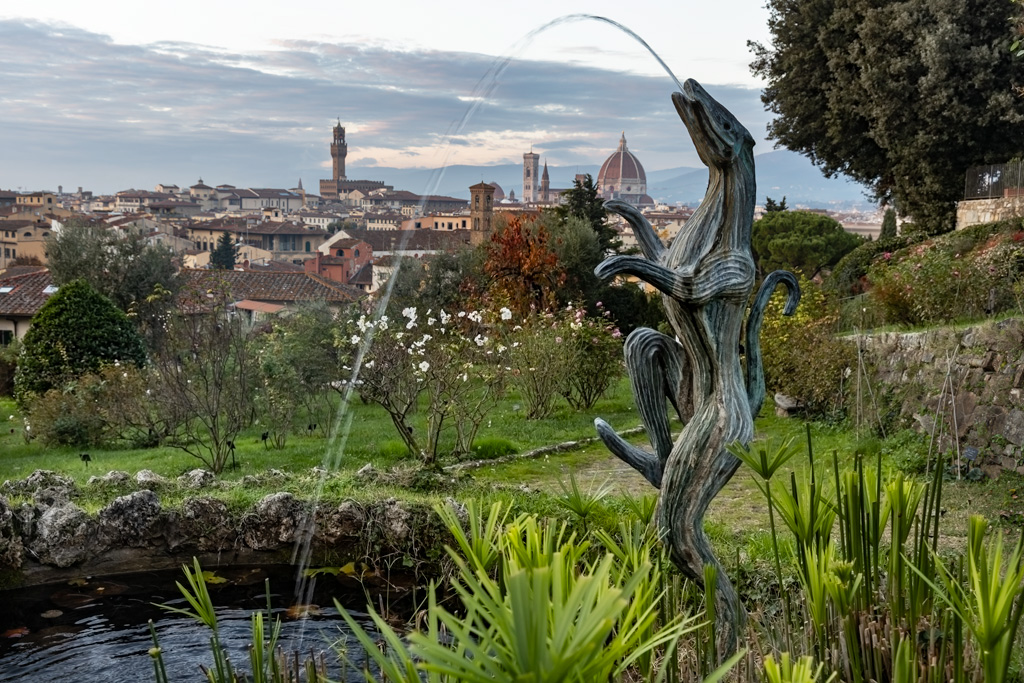
Walking up from the nice district of S. Niccolò towards Piazzale Michelangelo, you come across a terraced rose garden. It is a very pleasant place. You can enjoy not only the flowers and a magnificent view of the city, but also some statues by the Belgian artist Jean - Michel Folon which adorn the garden.
Basilica of San Miniato al Monte

In an elevated position from which the whole city can be admired, the Basilica of San Miniato is characterized by a splendid Florentine Romanesque façade with marble inlays. There are several works of art. The sacristy preserves a cycle of frescoes on the life of San Benedetto by Spinello Aretino.
San Miniato al Monte
Oltrarno - San Niccolò Area
Stefano Bardini Museum
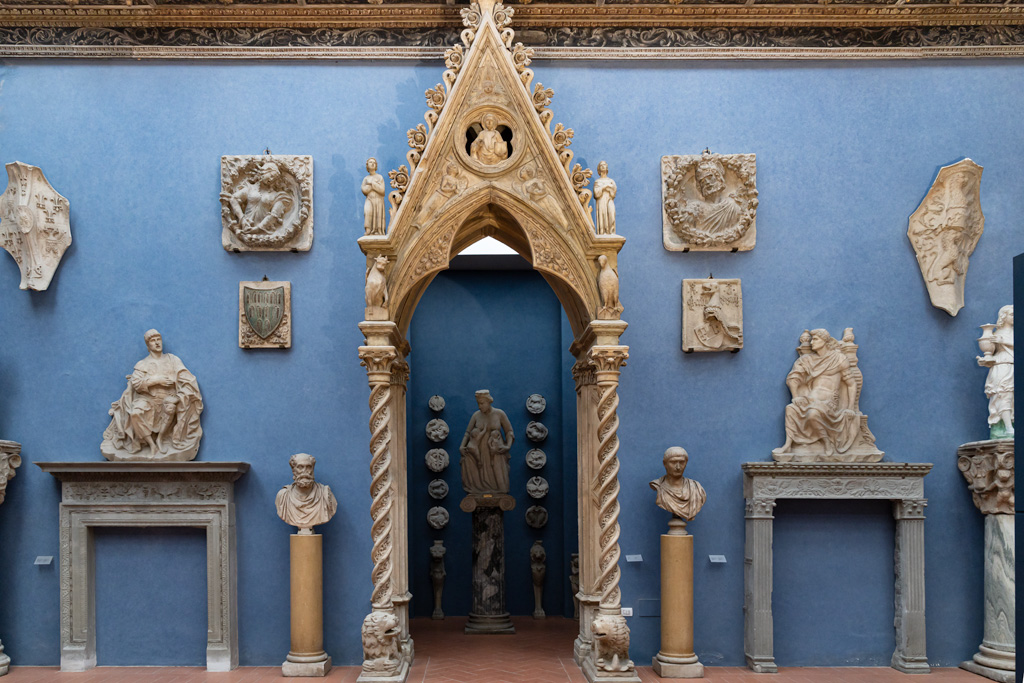
Stefano Bardini was one of the most authoritative Italian antique dealers between the nineteenth and twentieth centuries. He transformed his splendid private collection into this museum, which includes more than 3600 works of art (paintings, sculptures, armours, musical instruments, ceramics, coins, medals and antique furniture).
Stefano Bardini Museum
Bardini Villa and Gardens
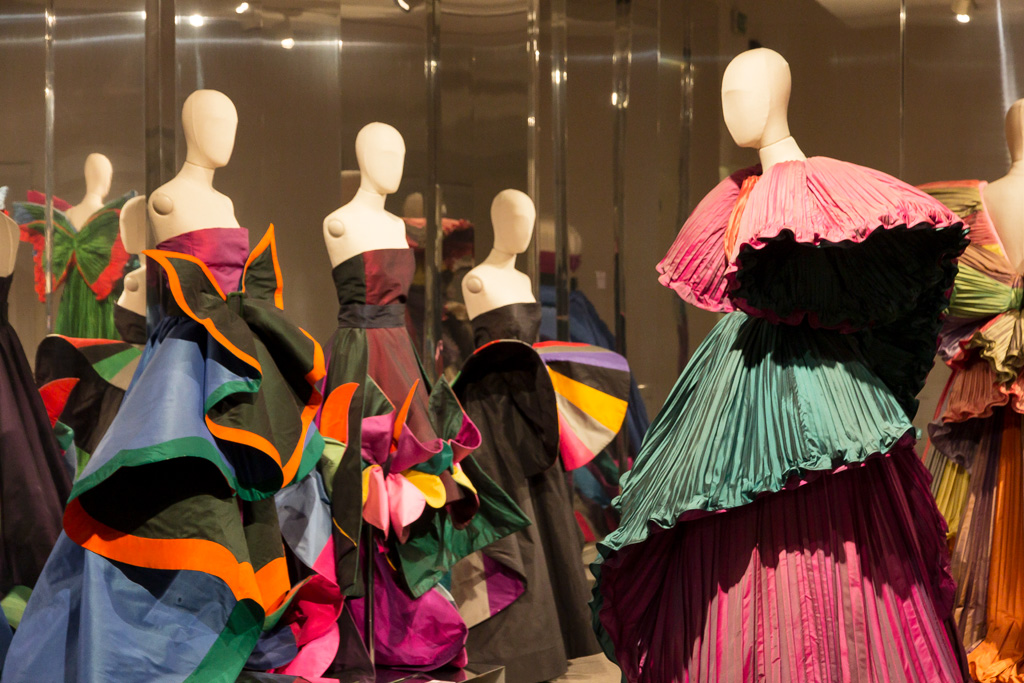
In Oltrarno, between Costa S. Giorgio and Borgo S. Niccolò, Villa Bardini is one of the most enchanted places in Florence. It has a four-hectare garden that offers a splendid panorama of the city. The villa, formerly Villa Manadora, belonged to the antiquarian Stefano Bardini and today is a museum space which, in addition to temporary exhibitions, houses the Capucci Museum and the Annigoni Museum.
Villa Bardini
Itineraries in Florence
Cenacles
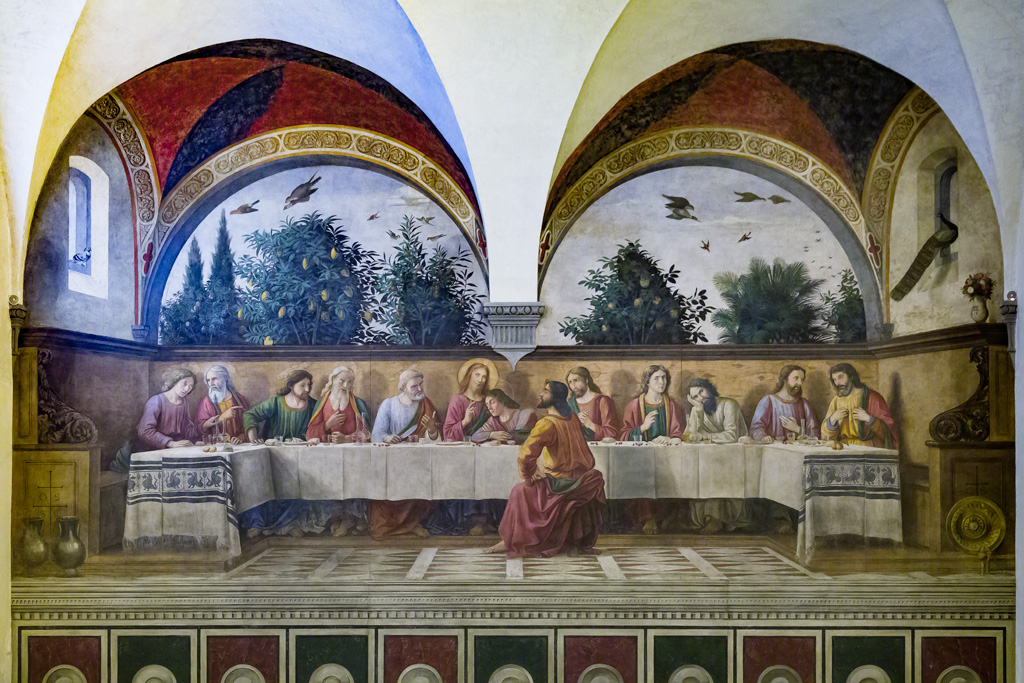
The theme of the Last Supper recurs in many artworks in Florence. We can then imagine an itinerary that touches some churches and convents that preserve cenacles by great artists: Andrea del Castagno in S. Apollonia, Perugino al Fuligno, Andrea del Sarto in San Salvi, Franciabigio alla Calza, Ghirlandaio in Ognissanti, etc.
Cenacles
Barbara
florenceapartment@icloud.com

© yourflorenceapartment.com • Webdesign: © Gianluca Poletti • Photos: © www.ghigoroli.com